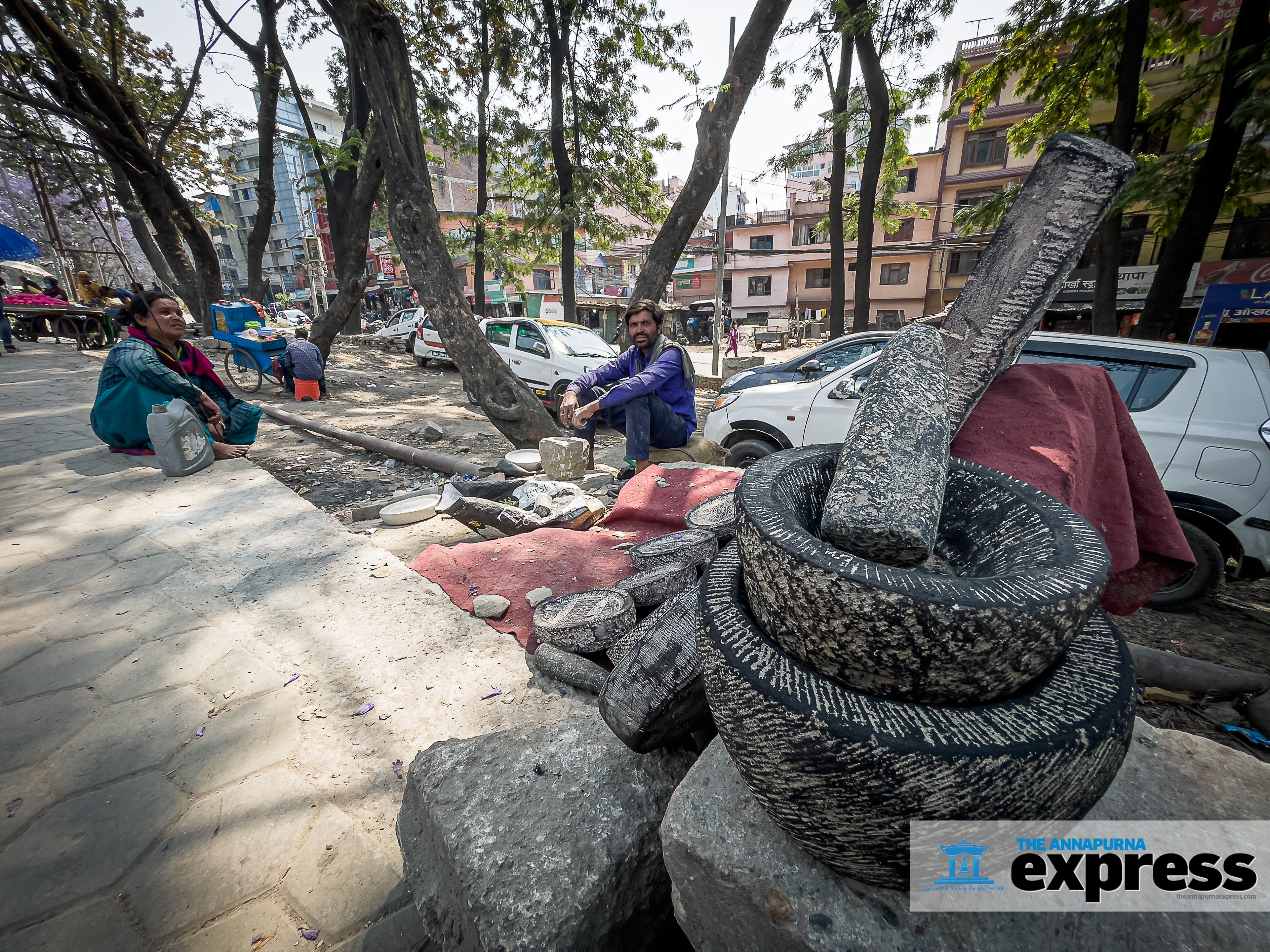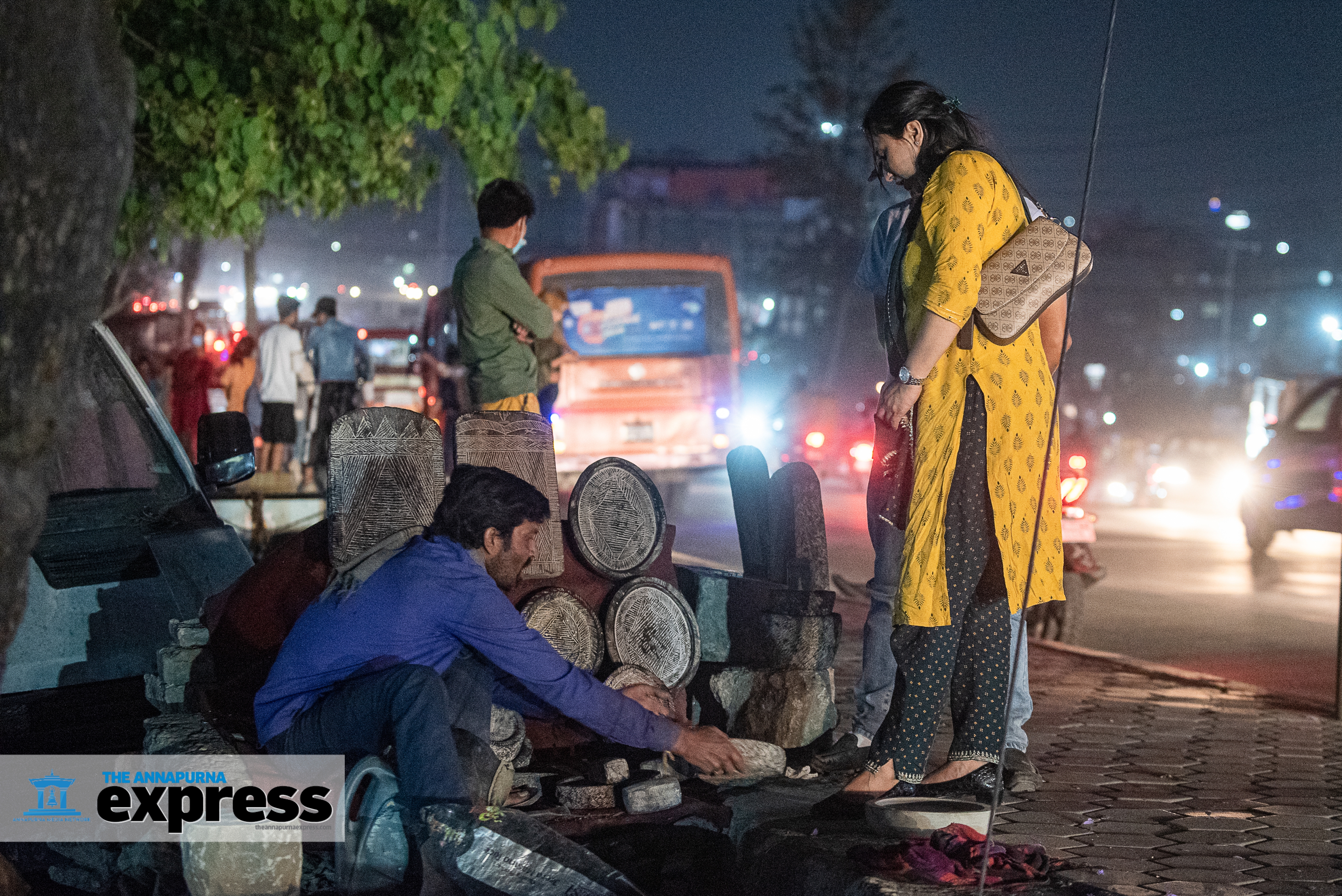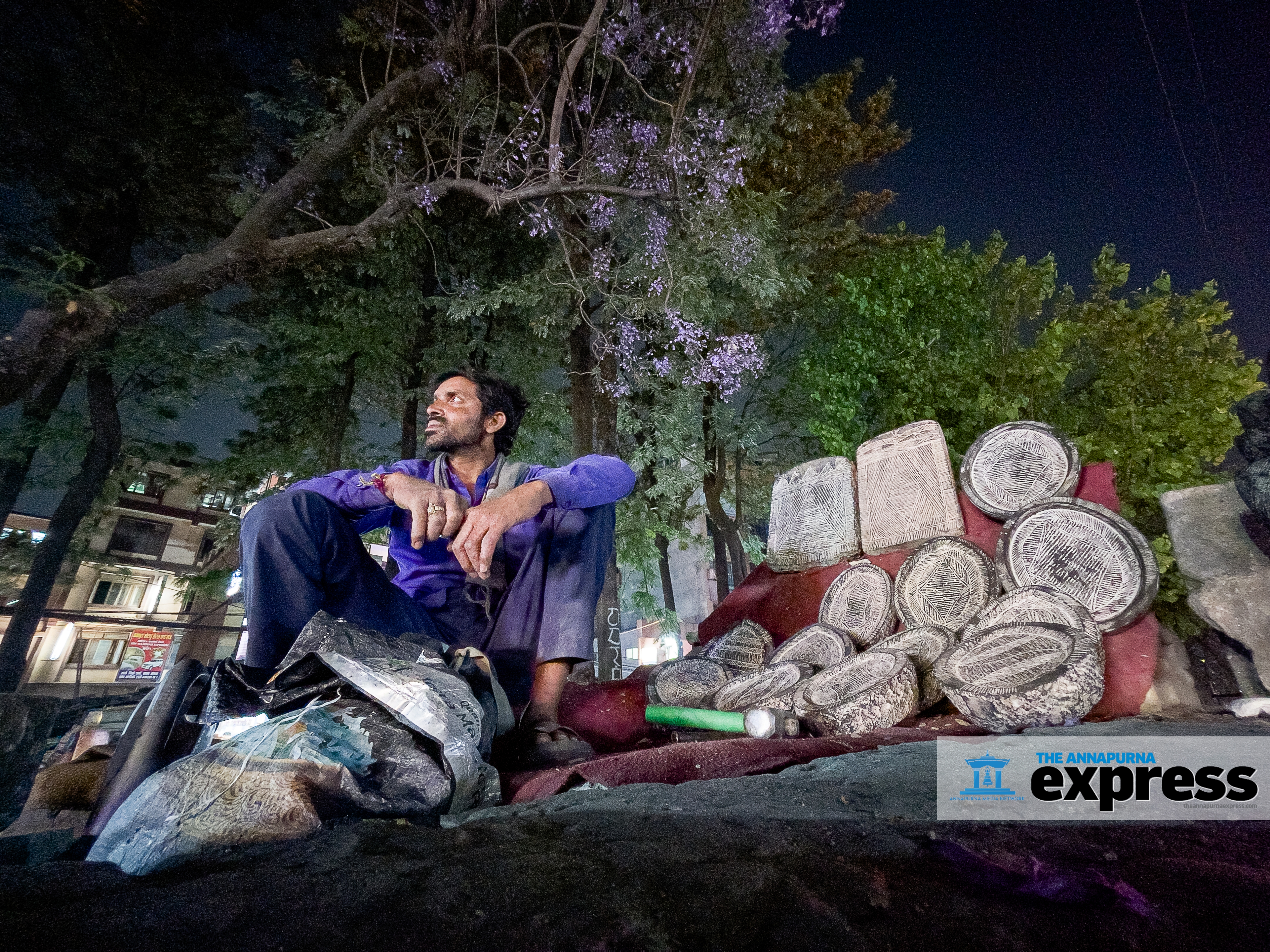Photo feature | Lessons in kindness
My personal rule of thumb to find out if a person is kind is to see how they treat animals. By this measure, Sneha Shrestha and her colleagues who work to protect and rescue stray dogs and animals are kindness personified.

This week I tagged along with a team from Sneha’s Care, an animal rescue center Shrestha founded, to document their work. The day started at the organization’s dog shelter in Chobhar, a safe haven for nearly 200 rescued dogs, who yelped and growled at me as I entered the premises.

There, I met Dr Bhuwan Giri, two animal handlers and a driver, and together we set out towards Thali. A brown pup with both his hind legs paralyzed needed help. At Thali, we were welcomed by a group of local dogs. They seemed to know Dr Giri and his team. They certainly did, as I later found out, as the team had treated some of these dogs before.

A kind-hearted lady had placed the sick pup in a carton box. After examining him, Dr Giri decided that he must be taken to the shelter.

With the first rescue of the day completed, we headed towards Mid-Baneshwor. This time, it was an adult stray dog that had not been eating well and sitting at the same spot for days.
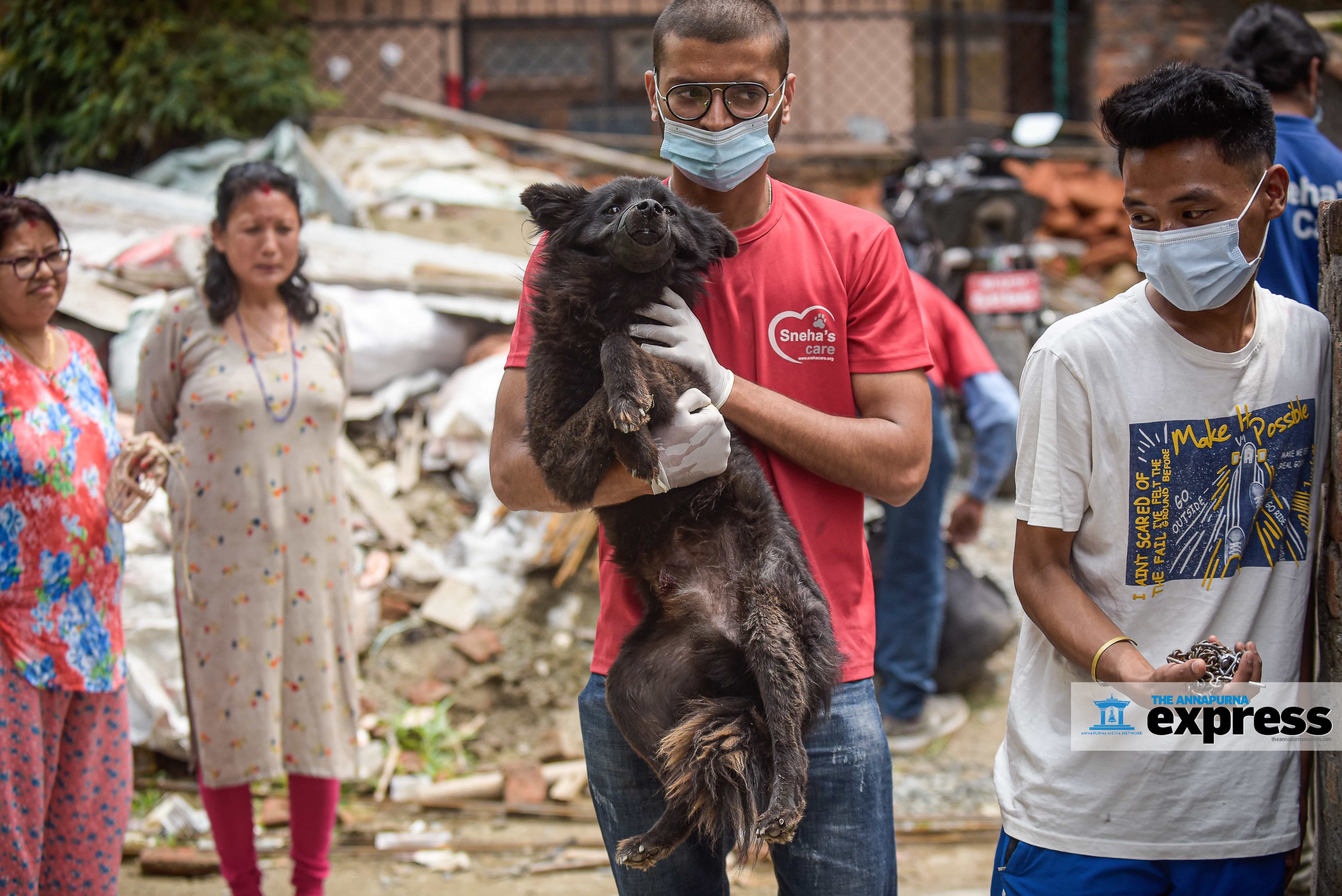
Dr Giri said that he had multiple illnesses and needed to be kept under observation.

The dog was promptly pulled into the van and we headed back to Chobhar. At the shelter, other staff members helped Dr Giri and his team remove the two ailing rescued dogs out of the van and to find them proper spots where they could be treated.

I bade farewell to the team and returned home knowing that the two dogs were in good hands.
Photo Feature | Take your pick: Sweet Indian or less-sweet Nepali?
Lychee and mango sellers are doing brisk business these days. Some of them, as you may have noticed, are taking a more ‘in-your-face’ sales approach by dangling a lychee-bunch at your eye-level by the roadside. But irrespective of the sales tactic, Kathmandu residents seem to be relishing the juicy seasonal fruits.
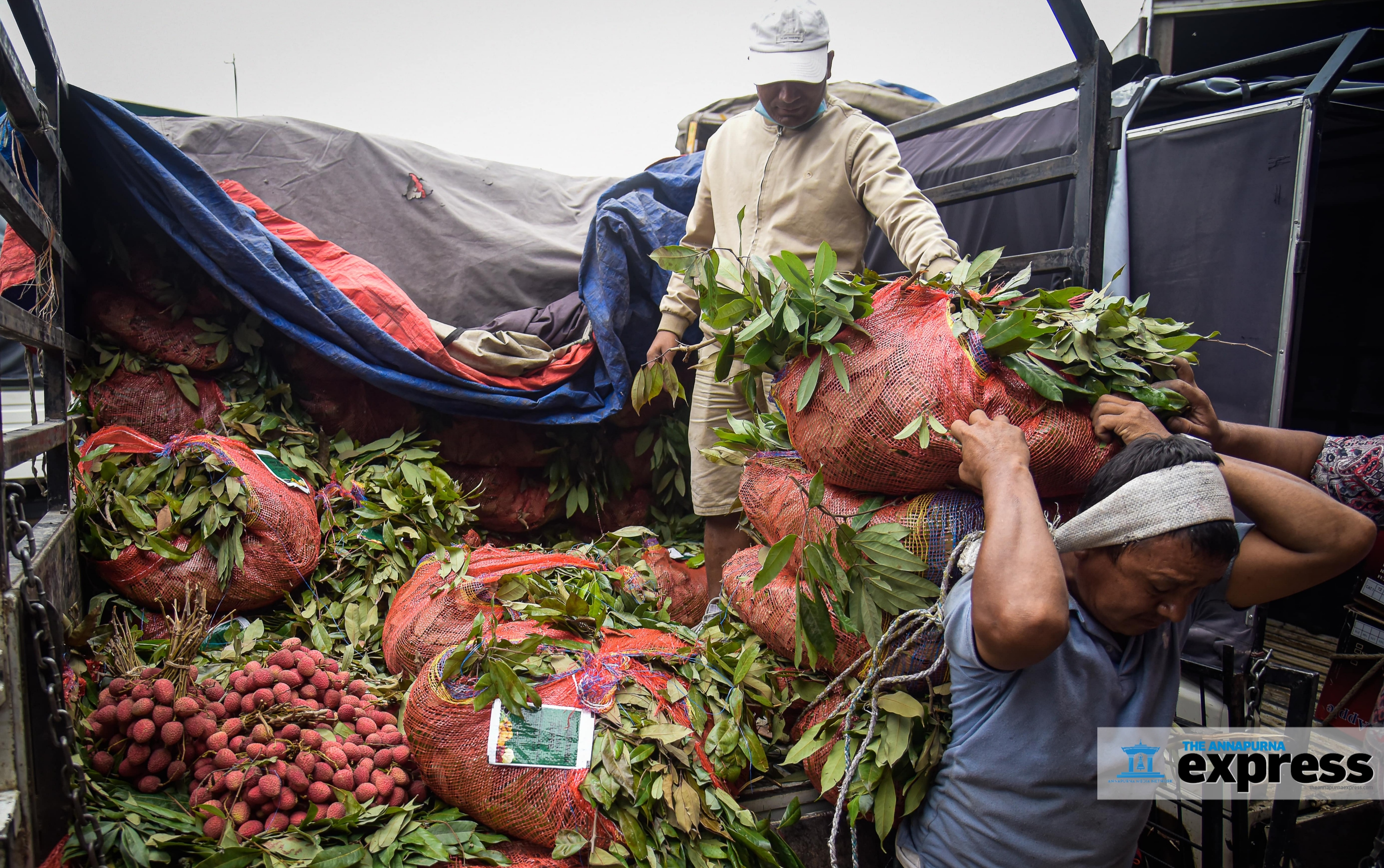
This week, I trained my lens on these fruit sellers and their business, as well as the journey of the fruits in question, from the farm to our homes.
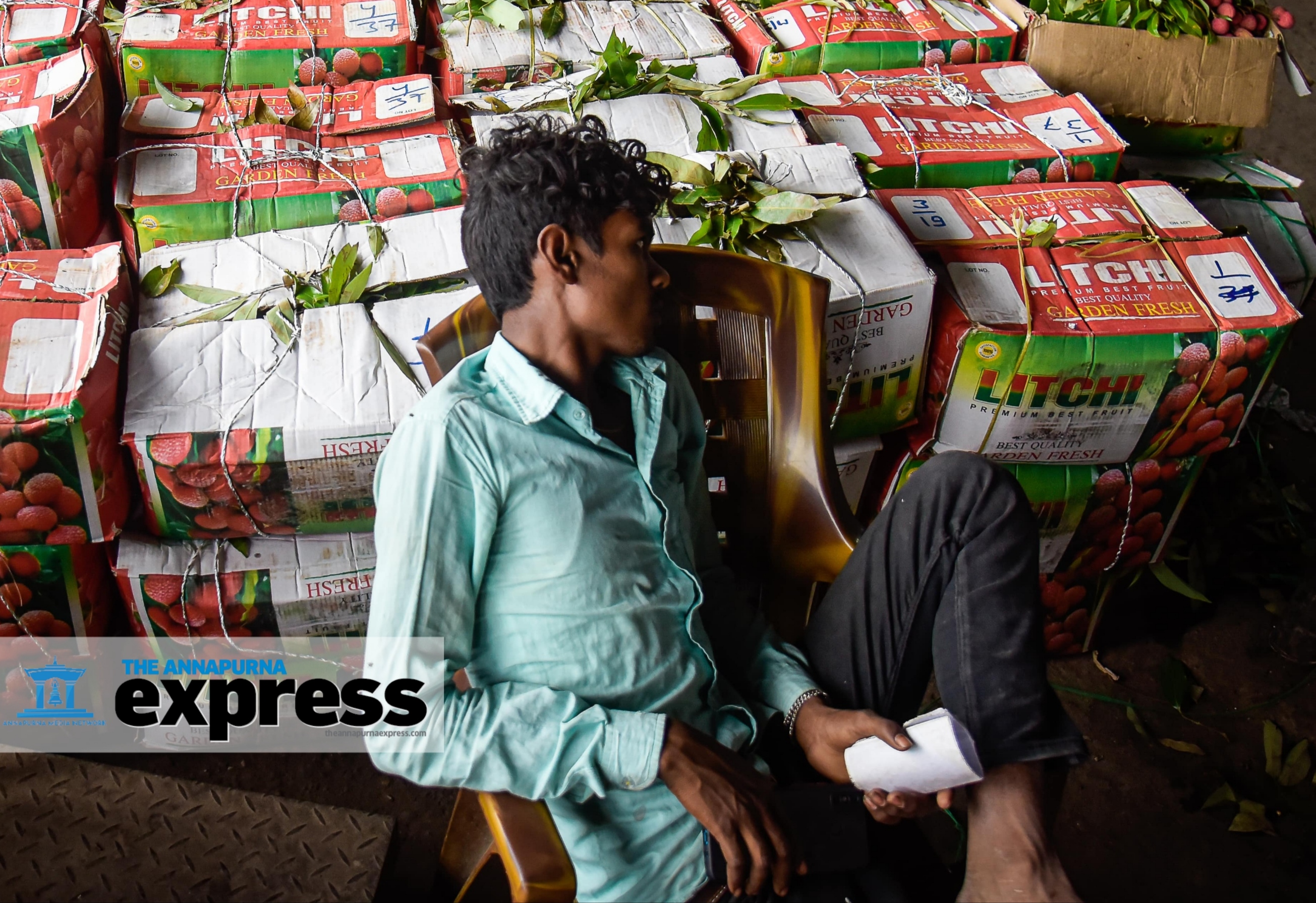
My ‘fruit pursuit’, which began by photographing and interviewing some fruit sellers in Kathmandu’s neighborhoods and streets, took me to Kuleshwor Fruit Market—the mother ship from where the majority of fruits sold in the city emerge.
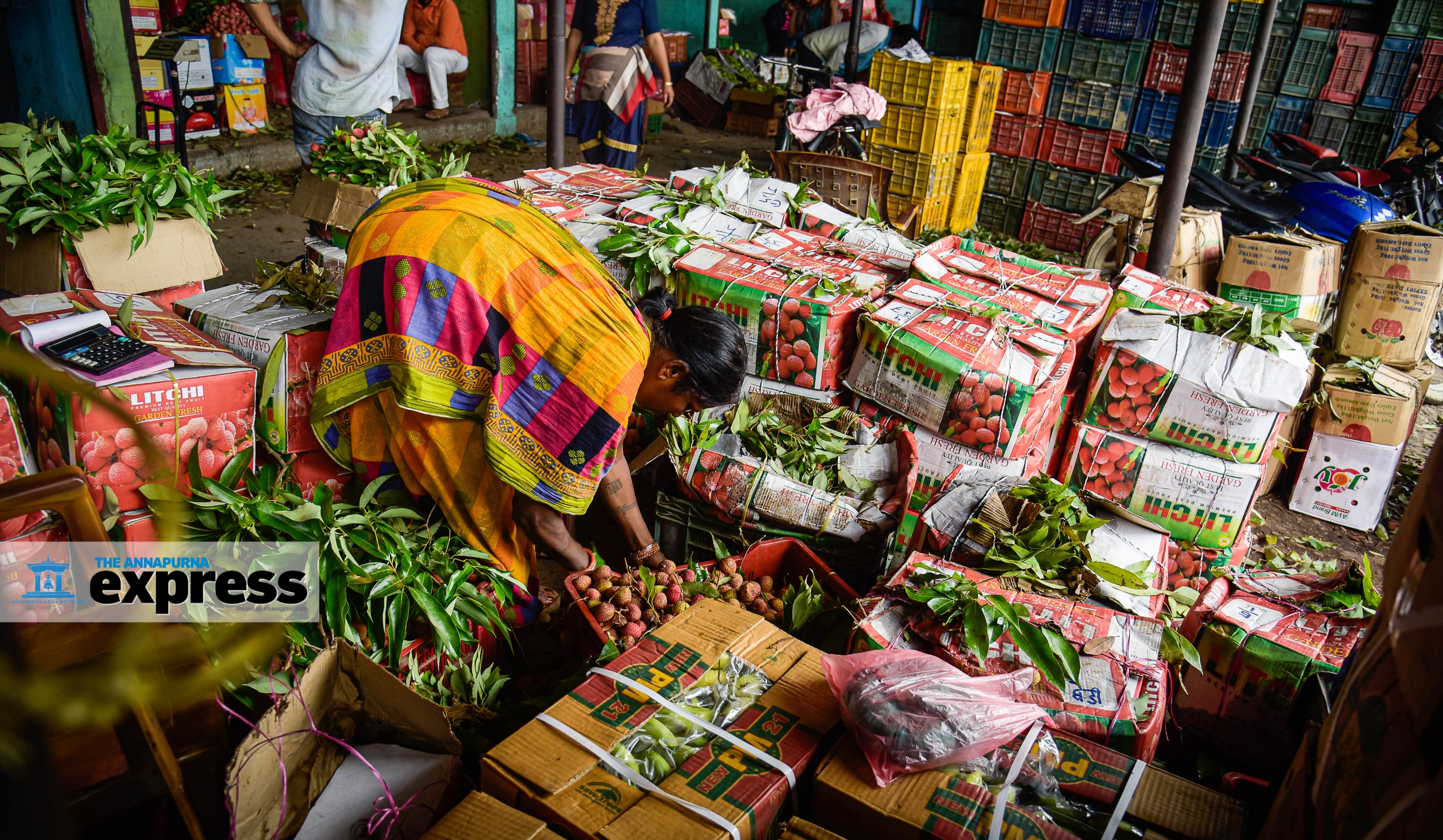
Inside this facility is row upon row of shops stacked and stuffed with carton boxes and sacks containing all kinds of seasonal fruits. A great many shops, I notice, have stocked up on mangoes and lychees.
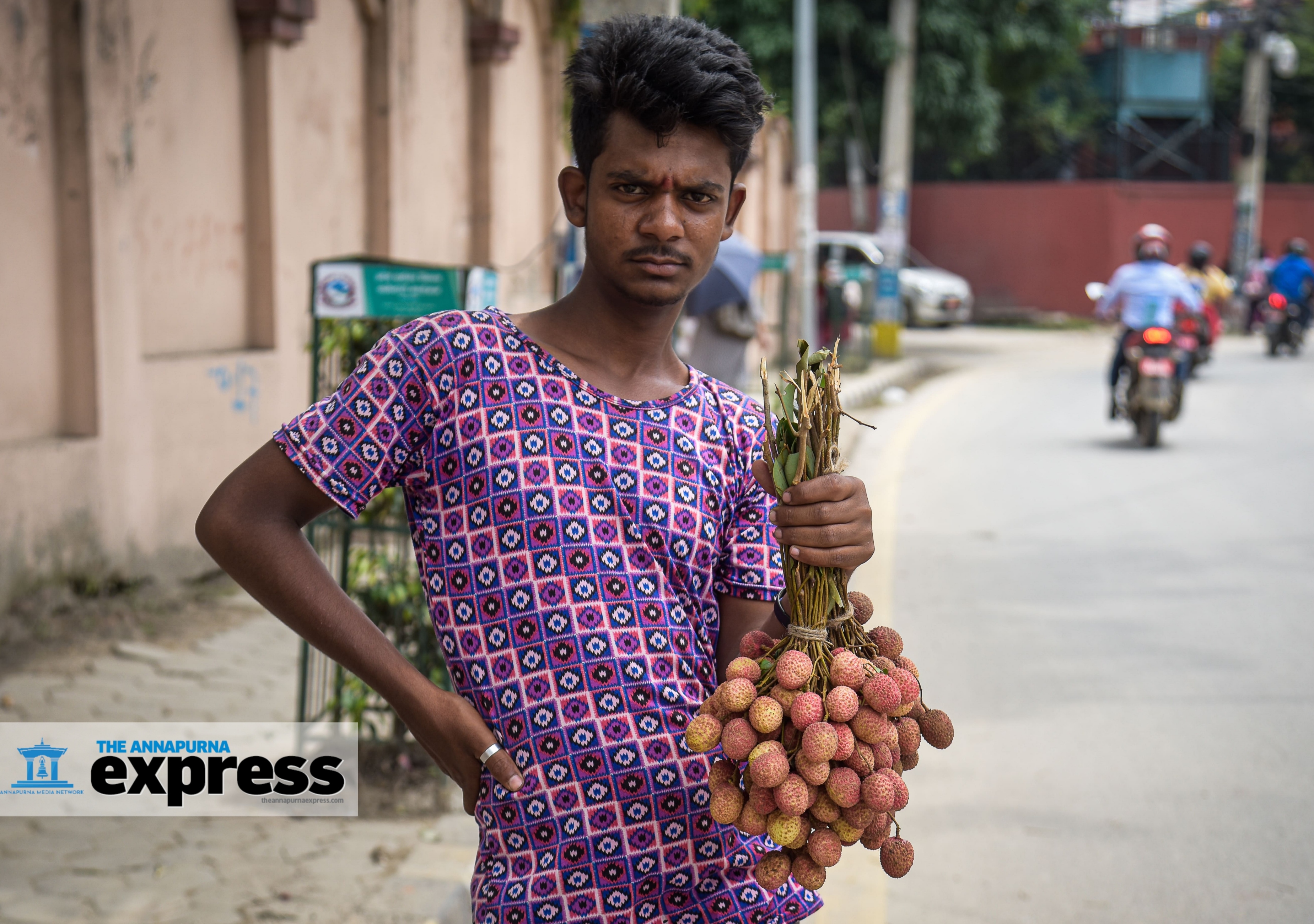
“Season’s top sellers,” a shopkeeper tells me. I ask him about the lychees, and he explains there are three kinds in the market—Nepali, Chinese, and Indian. And interestingly, most of the lychees sold in the market are either Indian or Chinese, although both kinds are brought from Muzaffarpur, a city in Bihar state of India. “Indian and Chinese lychees are sweeter than Nepali ones,” the shopkeeper says. “Indian lychees are the sweetest.”

Indian and Chinese lychees cost around Rs 170 a kg while the same quantity of the not-so-sweet Nepali variety can be bought for Rs 60-70.
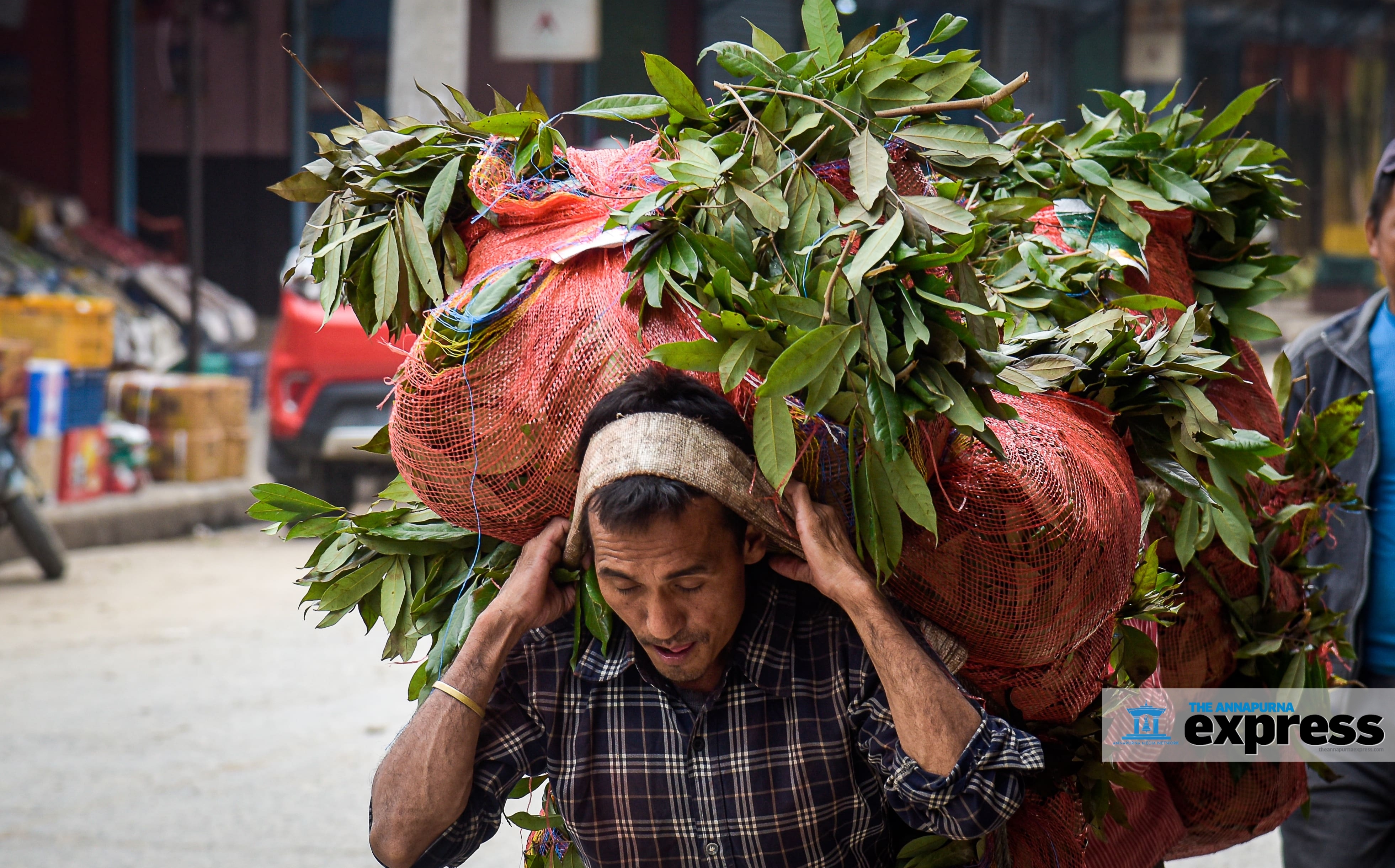
As for mangoes, there is the Nepali Malda from Lahan, Siraha, and the Banganapalle, which is imported from Maharashtra, India. Again, the ones imported from India cost more.
“They are sweeter and juicier, so pricier,” the shopkeeper tells me matter-of-factly. I take him at his word.
Photo feature | Saluting the makers of modern Nepal
The Annapurna Express honored 100 distinguished individuals for their contributions to Nepali society at a special function titled ‘Saluté’ in Kathmandu on May 23.
The event also marked the conclusion of ‘My Vision for Nepal’, an ApEx special series that brought together 50 eminent personalities from various fields to share their visions for the country. It was also the start of ‘ApEx Pioneers’, a new series that tells the stories of 50 Nepalis who have done pioneering works in their respective fields.
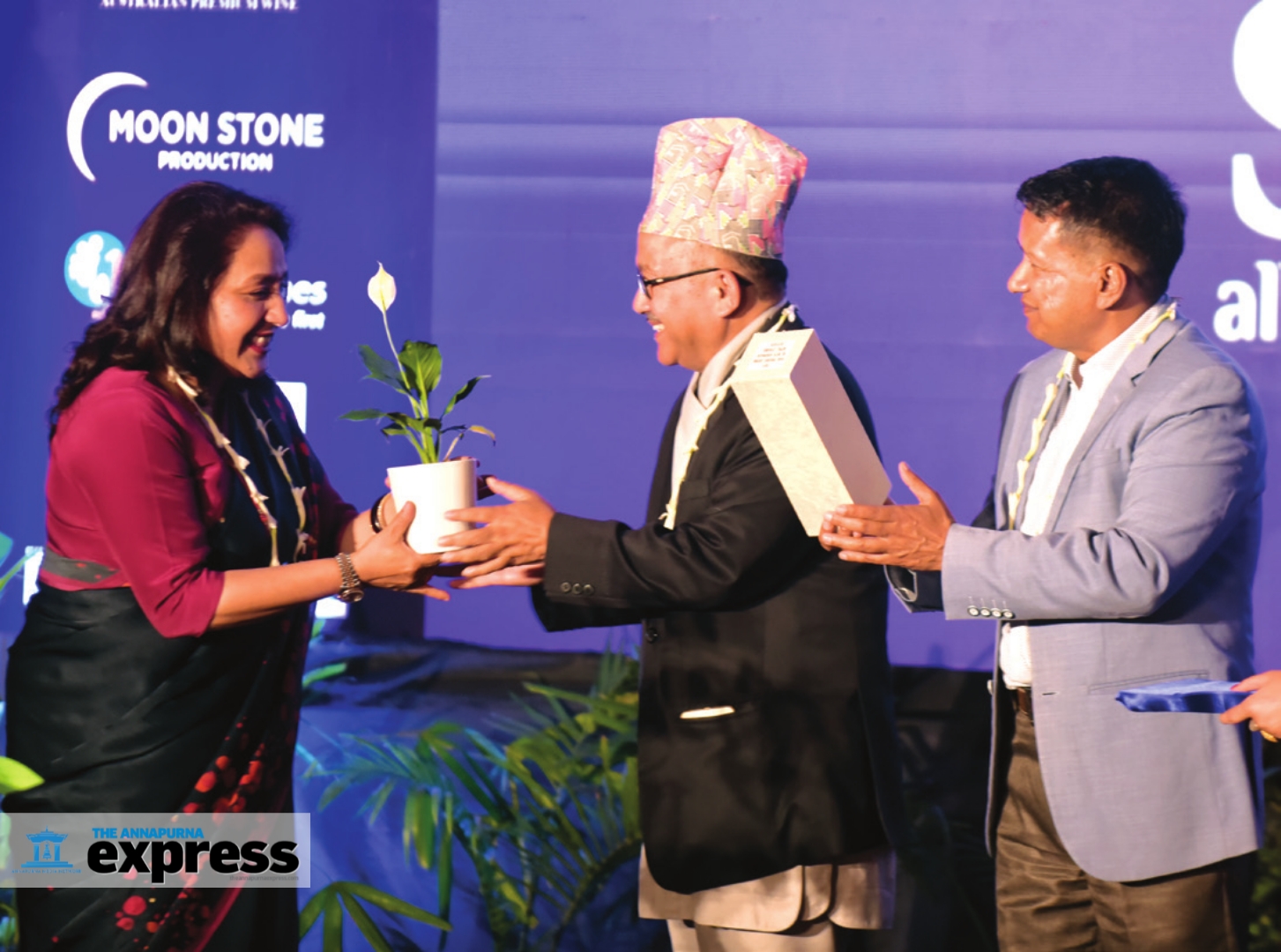
Anupama Khunjeli, Pioneer (left)
The individuals featured in ‘My Vision for Nepal’ were honored with medals while those in the ‘ApEx Pioneers’ were honored with tokens of love.
A coffee-table book ‘My Vision for Nepal’ was also unveiled on the occasion.
Addressing the function, Kalyan Shrestha, chief guest and former chief justice, congratulated and thanked all the visionaries and pioneers. He emphasized the need of driven individuals who dare question things and are determined to change what is not working.
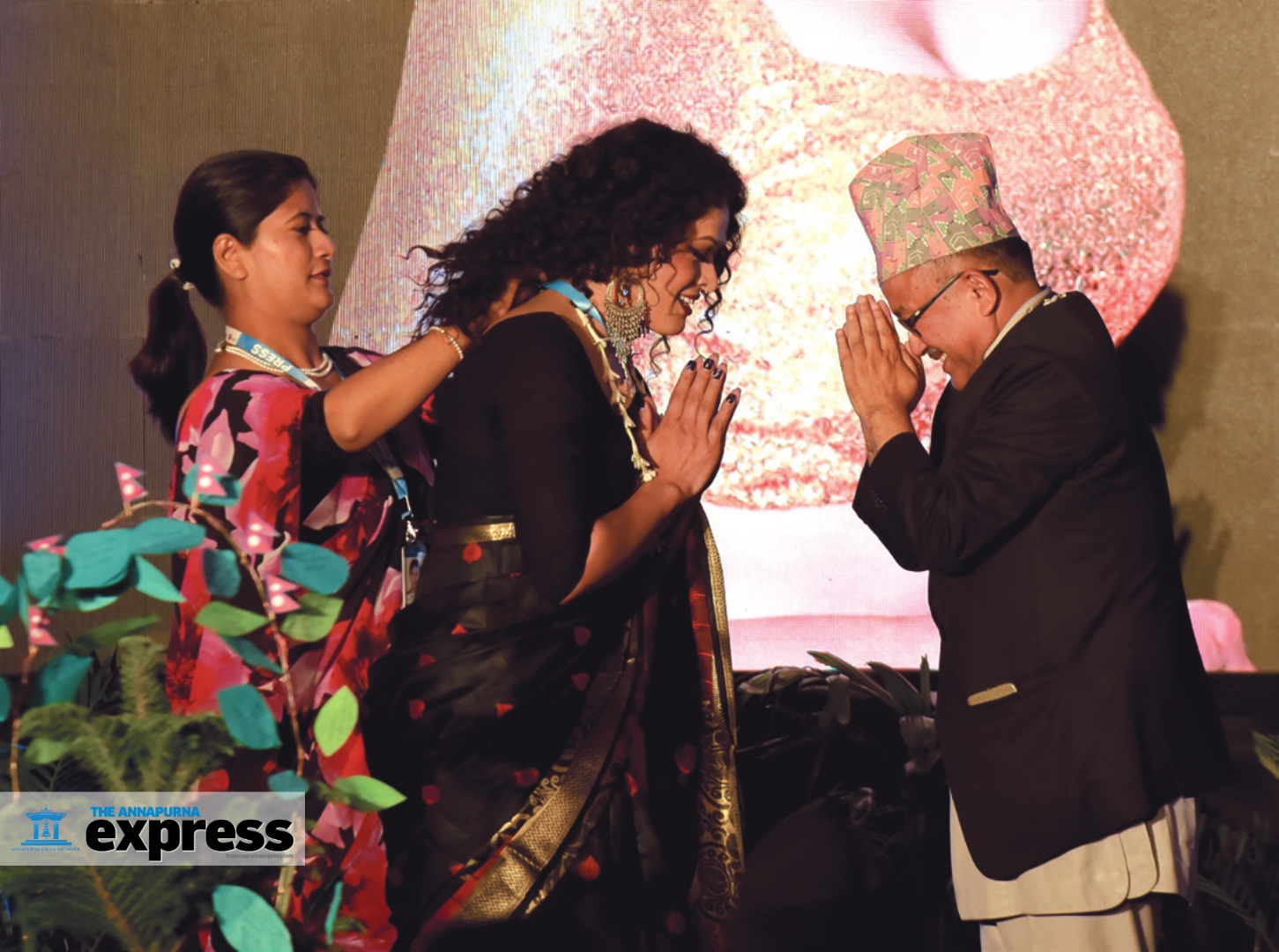
Nilam Poudel, Visionary (middle)
”We need to build a society that is ready to question [the authority], only then can we develop as a country,” he said.
Representing the visionaries, Anuradha Koirala, prominent anti-women trafficking campaigner and social worker, expressed her commitment to continuously work to materialize her vision—’zero trafficking of women and children’.
On behalf of the ‘ApEx Pioneers’, Madan Rai, Nepal’s first seed and agricultural equipment expert, said “we have to live up to the faith that has been bestowed upon us–no matter how big the challenges.”
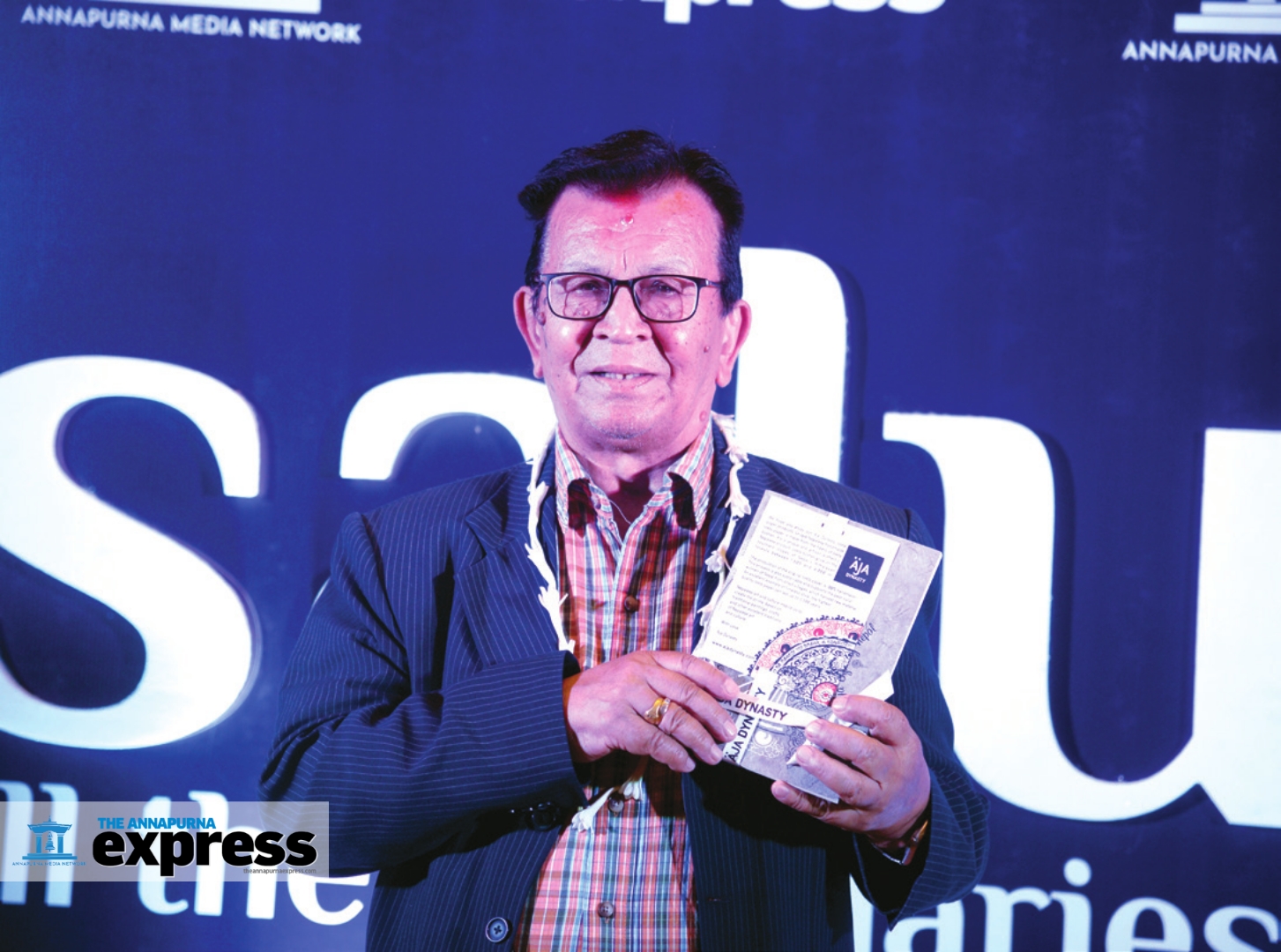
Buddhi Narayan Shrestha, Pioneer
Capt. Rameshwar Thapa, chairman of Annapurna Media Network, said that since its establishment, AMN has always tried to find solutions to the problems plaguing the country.
“There is a need for a network of eminent persons, like the ones we have in our midst today, who can contribute to nation building,” he said.
Sachan Thapa, AMN director, said ApEx had become a “reliable source of news and views and reflected the diversity of the Nepali society.”
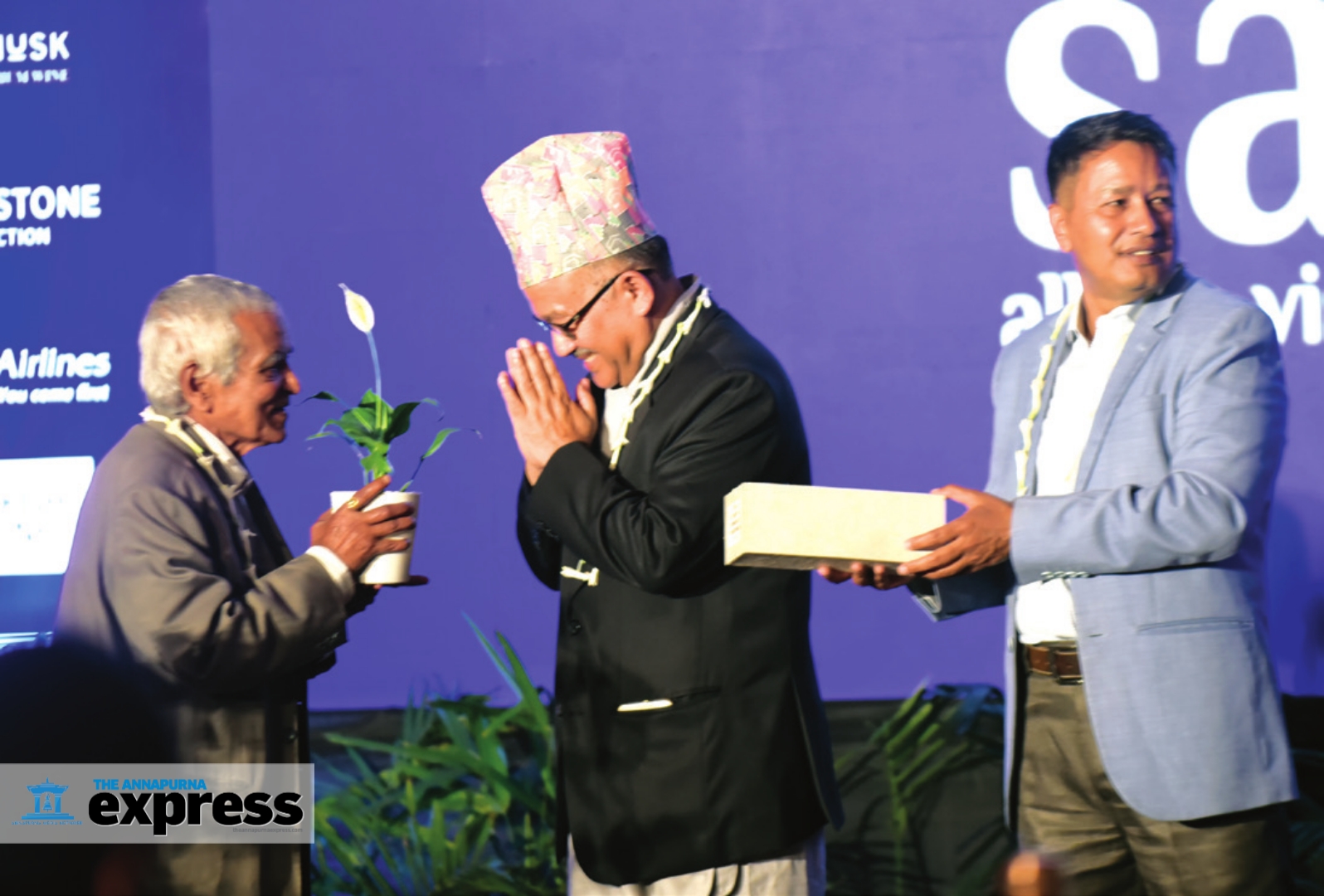
Ram Dayal Rakesh, Pioneer (left)
Sanat Neupane, AMN Group CEO, saluted the visionaries and pioneers. “Today, we present to you our undying respect disguised as medals and tokens of love,” he said.
On the occasion, Biswas Baral, editor-in-chief of The Annapurna Express, said ApEx would continue to push for social transformation through responsible journalism.
 Shanta Nepali, Visionary
Shanta Nepali, Visionary
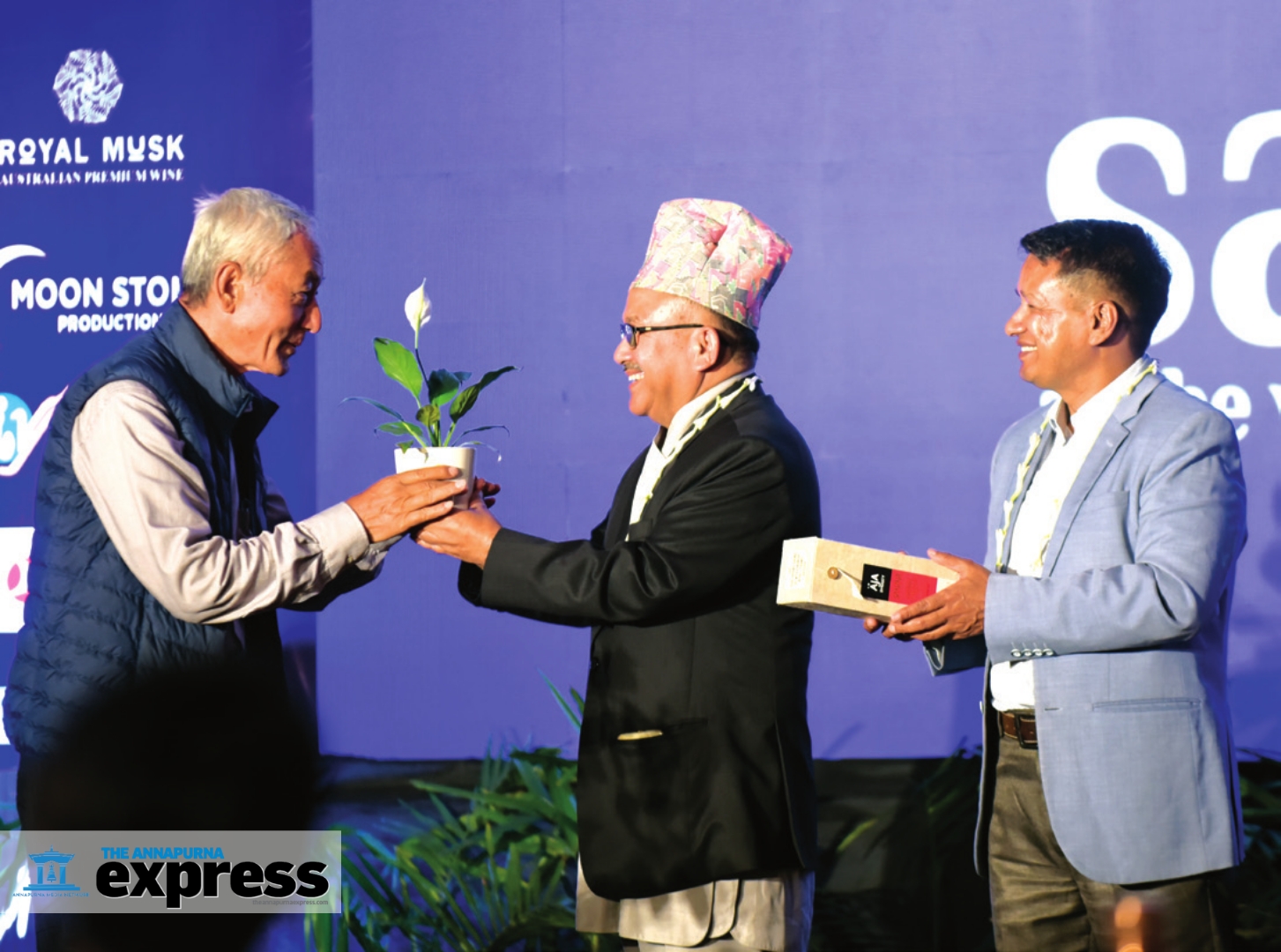 Madan Rai, Pioneer (left)
Madan Rai, Pioneer (left)
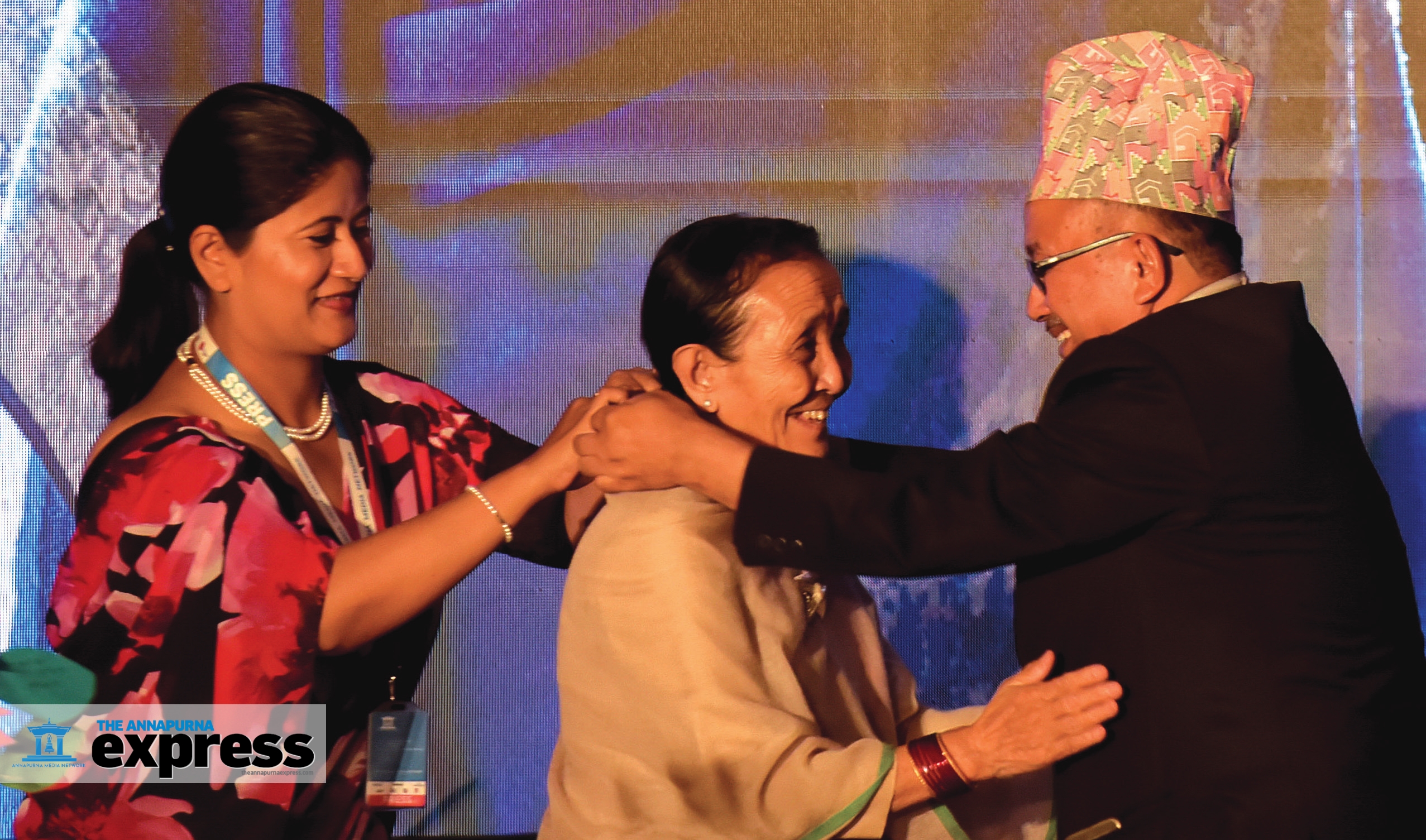 Anuradha Koirala, Visionary (middle)
Anuradha Koirala, Visionary (middle)
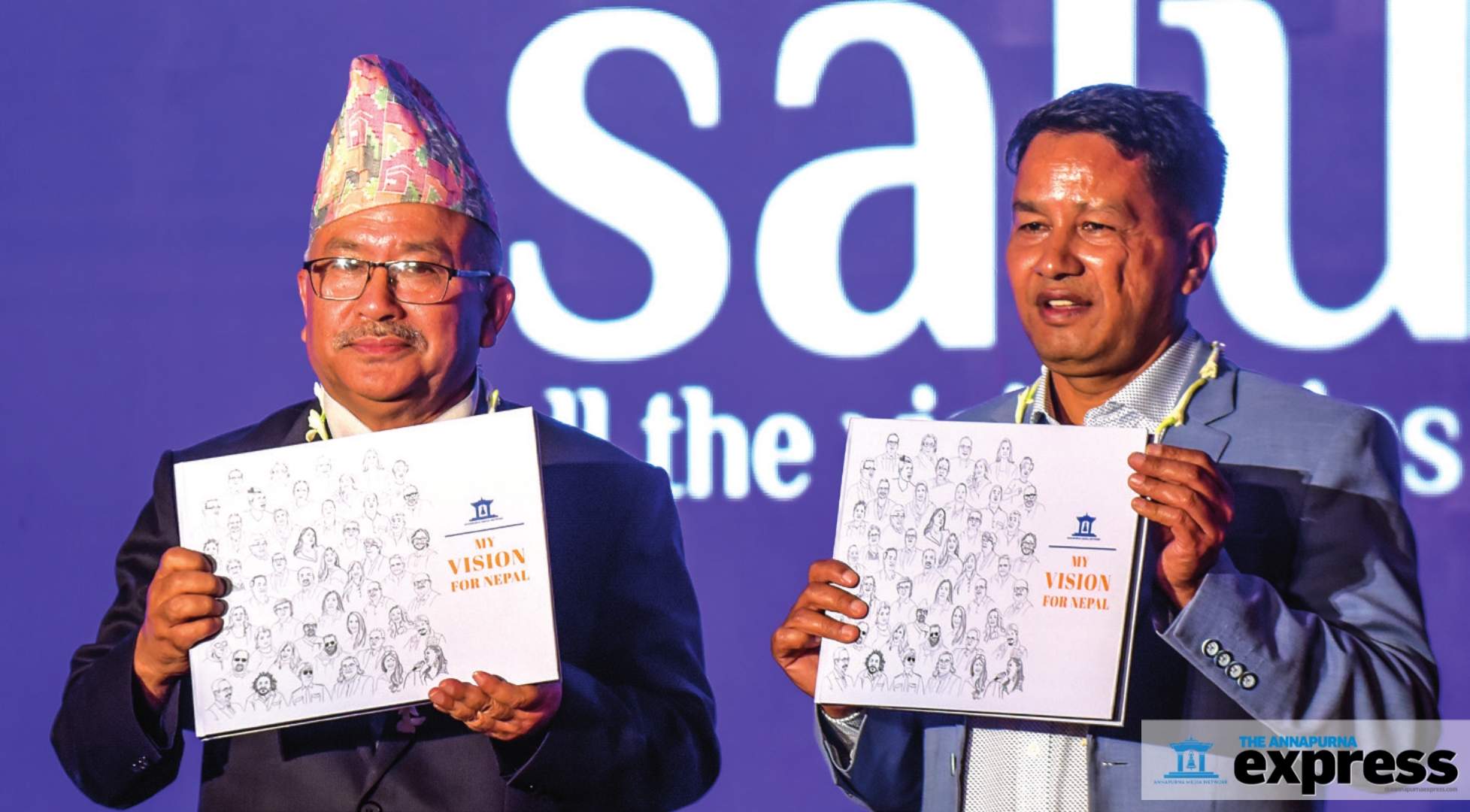 Chief guest former Chief Justice Kalyan Shrestha and AMN Chairman Capt. Rameshwar Thapa uneveling the coffee-table book 'My Vision for Nepal'.
Chief guest former Chief Justice Kalyan Shrestha and AMN Chairman Capt. Rameshwar Thapa uneveling the coffee-table book 'My Vision for Nepal'.
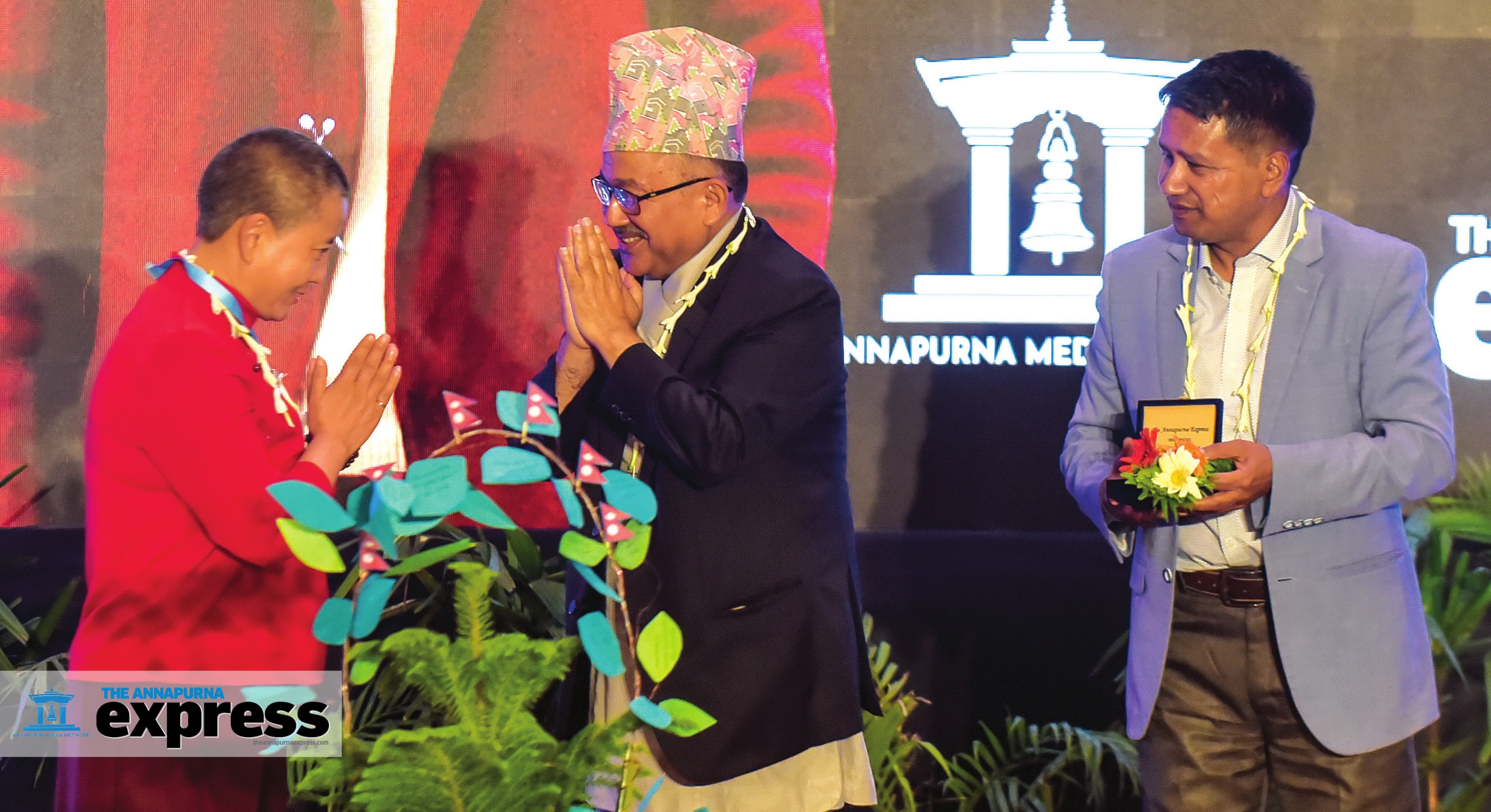 Ani Choying Drolma, Visionary (left)
Ani Choying Drolma, Visionary (left)
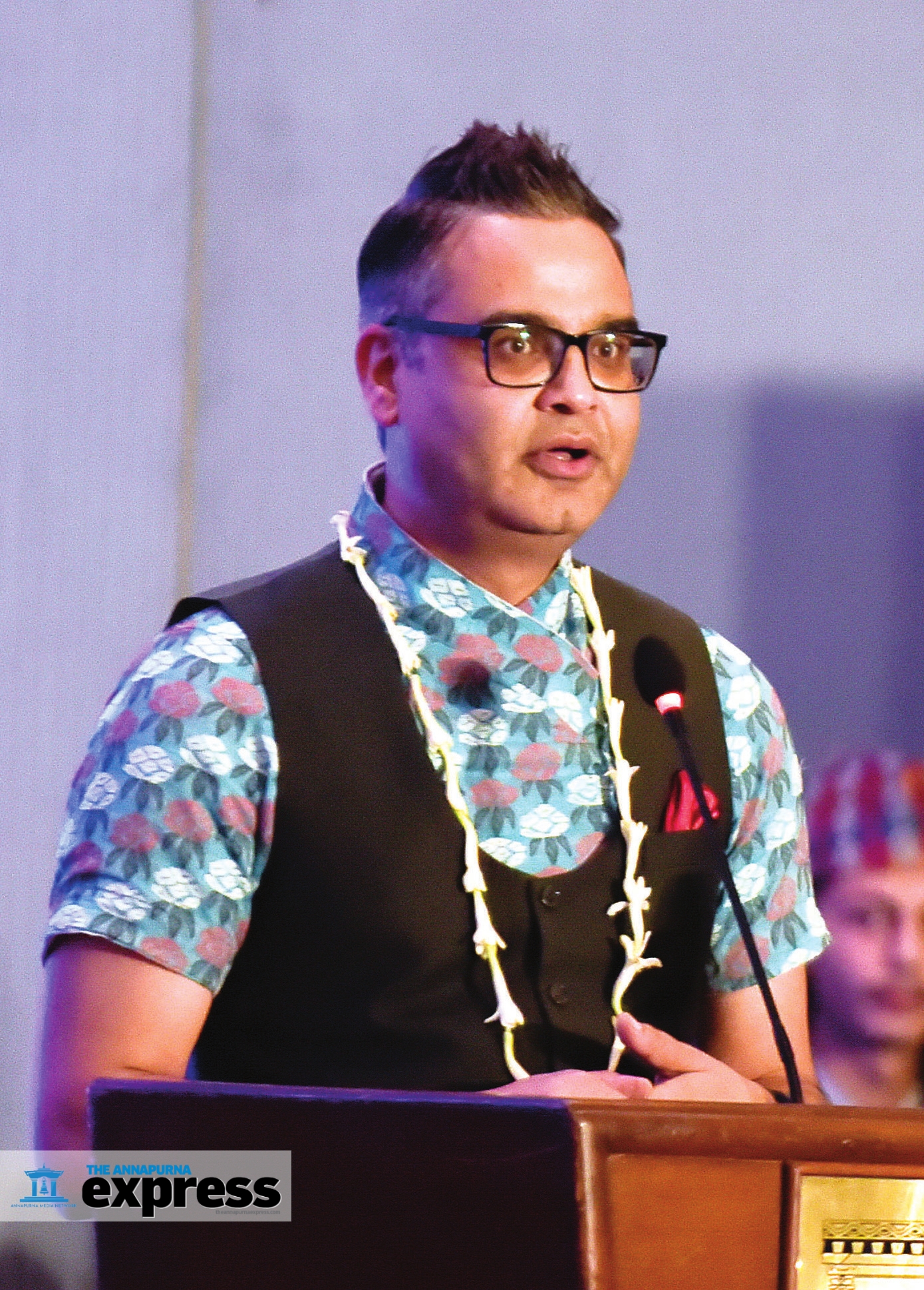 Sanat Neupane, AMN Group CEO
Sanat Neupane, AMN Group CEO
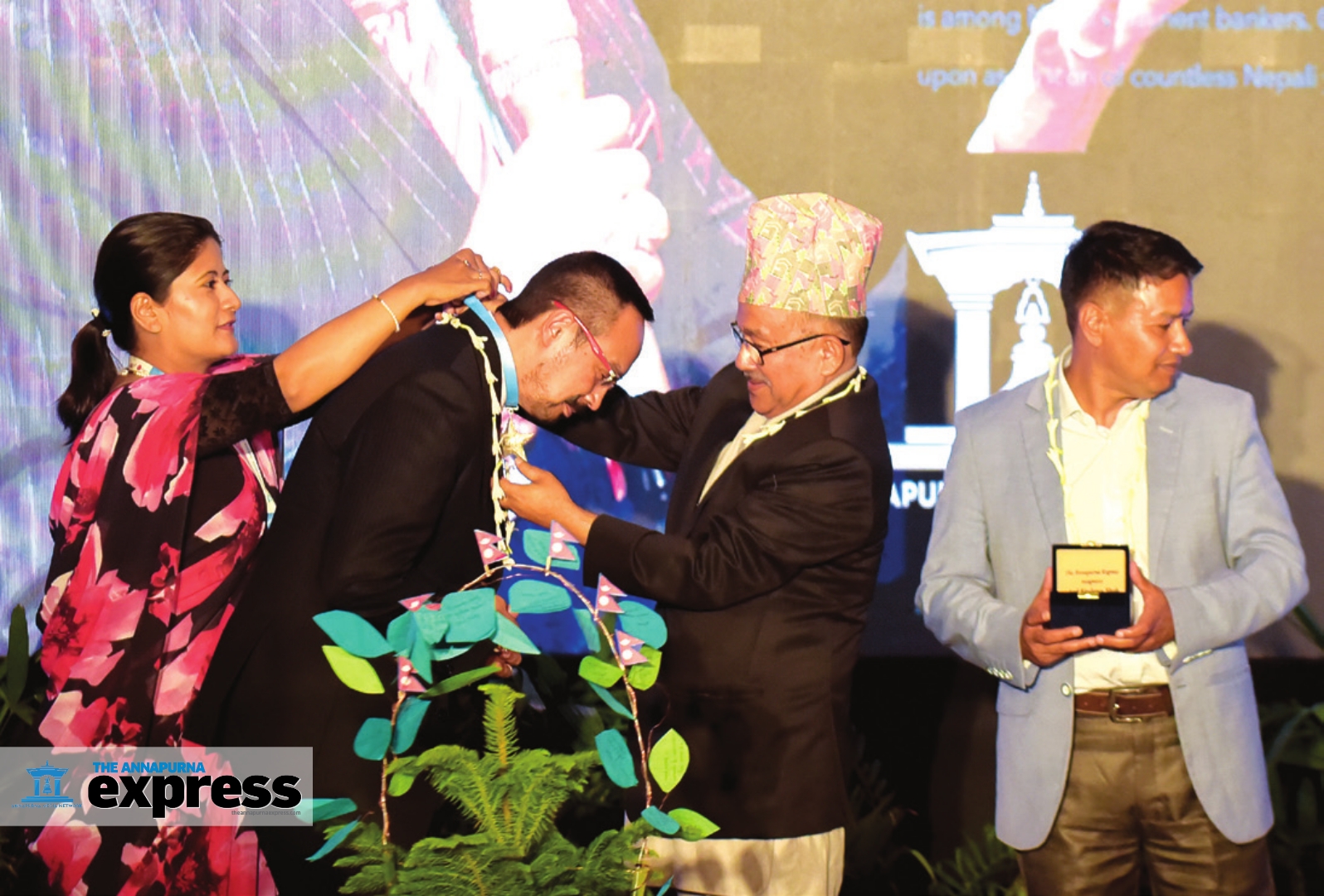
Anil Keshary Shah, Visionary (second left)
My Vision for Nepal
-
Aayushi KC
-
Abhaya Subba
-
Ambica Shrestha
-
Ani Choying Drolma
-
Anuradha Koirala
-
Bimala BK
-
Bonita Sharma
-
Dr Lhamo Y Sherpa
-
Greta Rana
-
Hima Bista
-
Mira Rai
-
Mohna Ansari
-
Nikita Acharya
-
Nilam Poudel
-
Onsari Gharti Magar
-
Roja Kiran Basukala
-
Rubina Chhetri
-
Sabitra Bhandari
-
Sama Thapa
-
Sampada Malla
-
Shanta Nepali
-
Shrinkhala Khatiwada
-
Sushma Rajbhandari
-
Tista Prasai Joshi
-
Amar Neupane
-
Anil Shah
-
Bipin Adhikari
-
Birendra Basnet
-
Biswo Poudel
-
Capt. Rameshwar Thapa
-
CK Lal
-
Dr Anup Bastola
-
Dr Bagawan Koirala
-
Dr Sanduk Ruit
-
Hari Sharma
-
Jagannath Lamichhane
-
Juju Kaji Maharjan
-
Khagendra Lamichhane
-
Min Bahadur Bham
-
Nikhil Uprety
-
Nischal Basnet
-
Nischal Nath Pandey
-
Pradip Pariyar
-
Pramod Dhakal
-
Ram Sharan Mahat
-
Sixit Bhatta
-
Sujeev Shakya
-
Swami Anand Arun
-
Vijay Lama
ApEx Pioneers
-
Ashesh Malla
-
Baburam Bhattarai
-
Baikuntha Manandhar
-
Bal Krishna Joshi
-
Basant Raj Mishra
-
Bhairab Risal
-
Bharat Pokharel
-
Binod Chaudhary
-
Buddhi Narayan Shrestha
-
Capt. Siddhartha Gurung
-
Devendra Raj Pandey
-
Dr Bhagawan Koirala
-
Dr Kumud Dhital
-
Dr Ram Kantha Makaju
-
Dr Sanduk Ruit
-
Durga Baral
-
Gagan Pradhan
-
Ghanashyam Gurung
-
Harry Bhandari
-
Himalaya Shumsher JBR
-
Kanchha Sherpa
-
Kiran Manandhar
-
Kulman Ghising
-
Madan Rai
-
Mahabir Pun
-
Mahesh Acharya
-
Min Bahadur Gurung
-
Mukesh Chalise
-
Neer Shah
-
Pawan Golyan
-
Rabindra Puri
-
Ram Dayal Rakesh
-
Ram Kumar Panday
-
Ramesh Sherpa
-
RP Pradhan
-
Shyam Goenka
-
Suresh Raj Sharma
-
Tulsi Ghimire
-
Uday Raj Khanal
-
Upendra Mahato
-
Uttam Sanjel
-
Anupama Khunjeli
-
Anuradha Koirala
-
Bhinda Swari Shah
-
Bhuwan Chand
-
Bishnu Maya Pariyar
-
Jhamak Ghimire
-
Mallika Shakya
-
Manjushree Thapa
-
Usha Nepal
Photo Feature | Night of the goddess
It’s three in the morning and the Teendhara Chowk in Banepa is teeming with people as though it was a busy afternoon. Folks of all age groups are here. Many of them are holding tiki torches in their hands; others are just there to witness the spectacle that is about to unfold. In the cards is a torch rally, part of the Chandreshwori Jatra, also considered the largest festival in Kavre district.

The three-day festival is held every year in honor of Chandreshwori, the avatar of Hindu goddess Parvati. It celebrities the triumph of good over evil. The torch rally, locally known as Ma-ta Puja, falls on the day of Buddha Purnima.

Again, it’s well before dawn, the sky at its darkest. On the ground, certain energy is building up. There is a small group of young men with Dhimeys (traditional Newari drums) and Bhusyahs (cymbals) getting ready for the procession. There are people preparing the plates laden with offerings.
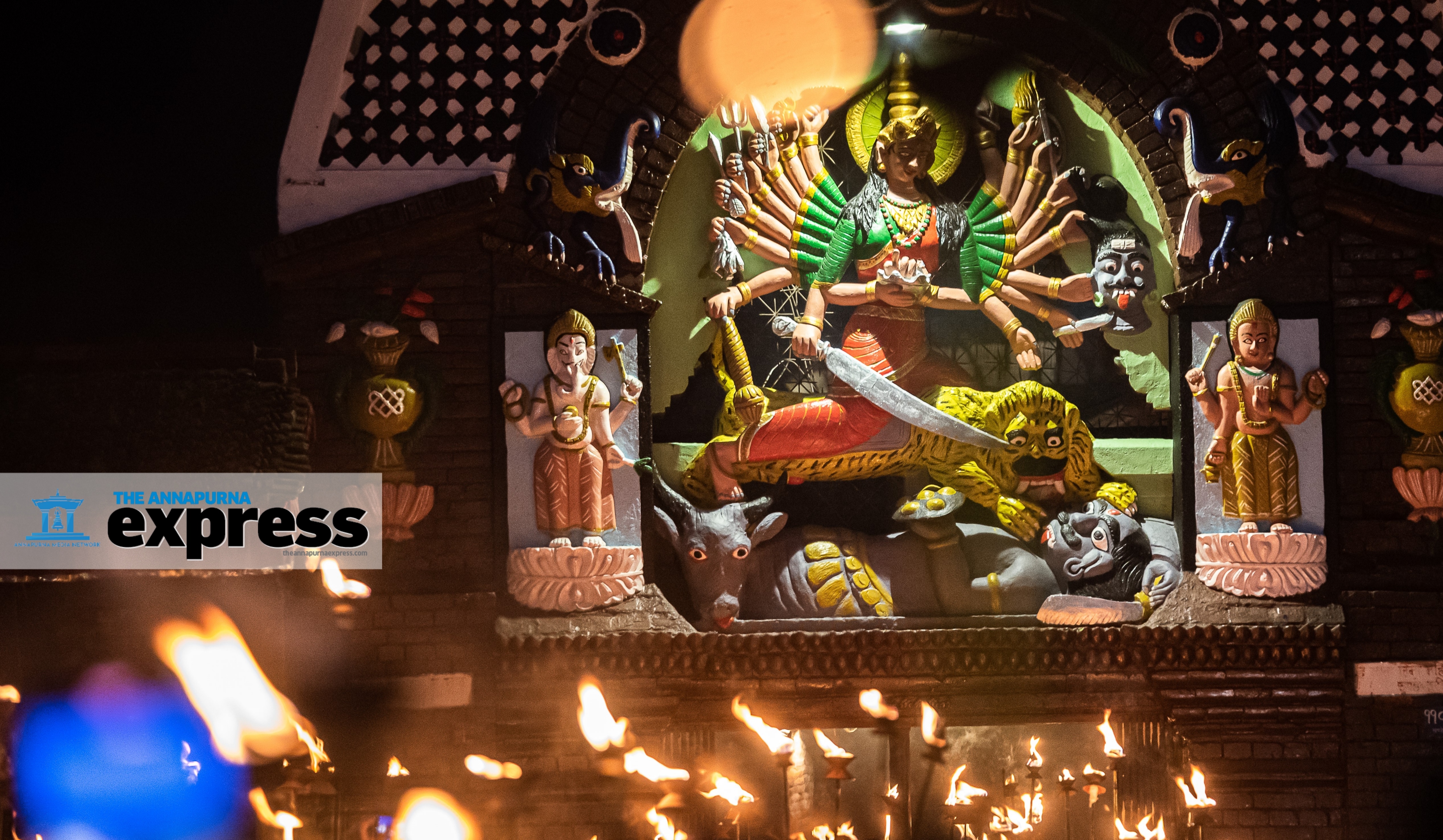
Soon the torches are lit. The number of flames multiplies and there is a red glow all over. The rally is moving and so are the dancing flames. The movement of the fire-wielding procession resembles a rapidly spreading wildfire. I follow the march, which is set to conclude at the Chandreshwori Temple.

As we approach the shrine, a large idol of the goddess herself looms over the procession. The radiance of torches gives her a formidable presence. She commands reverence among her worshippers. The moment is hypnotizing.

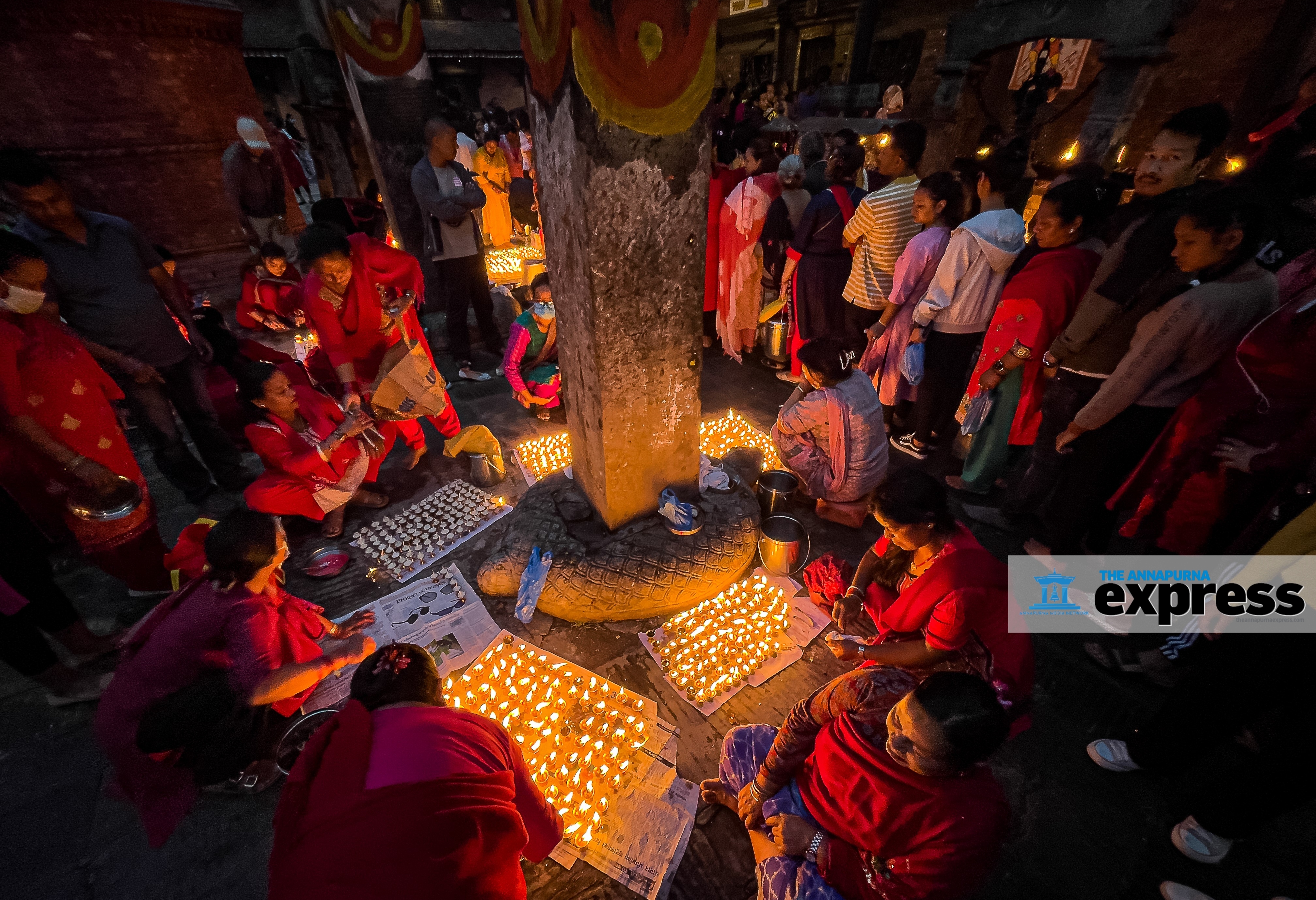
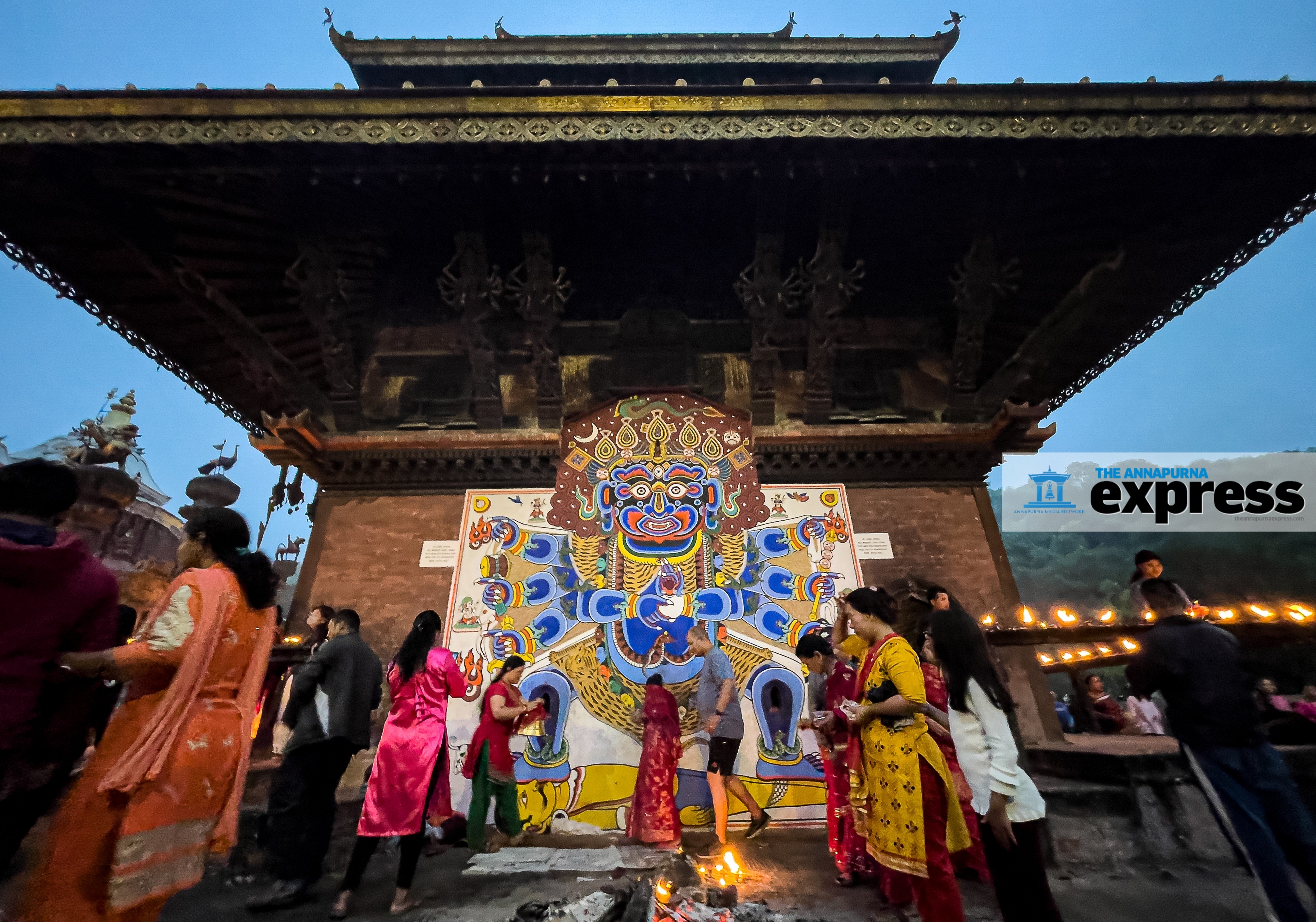
Photo Feature | The final stretch
Nepal votes this Friday (May 13) to elect new representatives for its 753 local units, in what will be the second local elections under the new constitution.
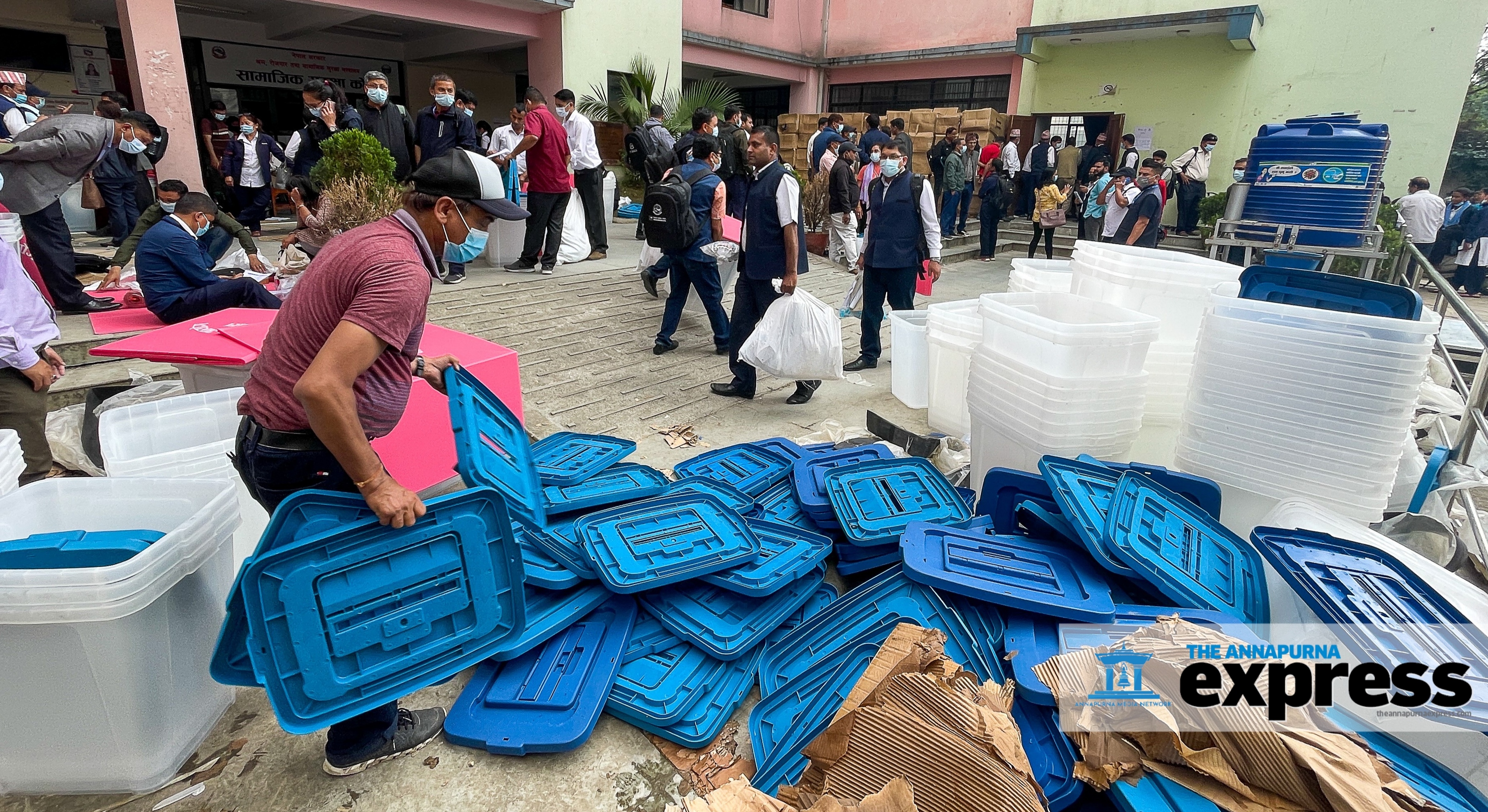
From the Election Commission’s side, all systems are a go. Polling stations are being prepared and election materials being delivered and set up across the country. The poll governing body has also assigned returning officers to ensure that the election takes place in a free and fair manner.

Meanwhile, the government has activated the security forces—the Nepal Army, Armed Police Force, Nepal Police, and National Investigation Department—for election security. It has also deployed 100,000 temporary police personnel to help with the security arrangements.
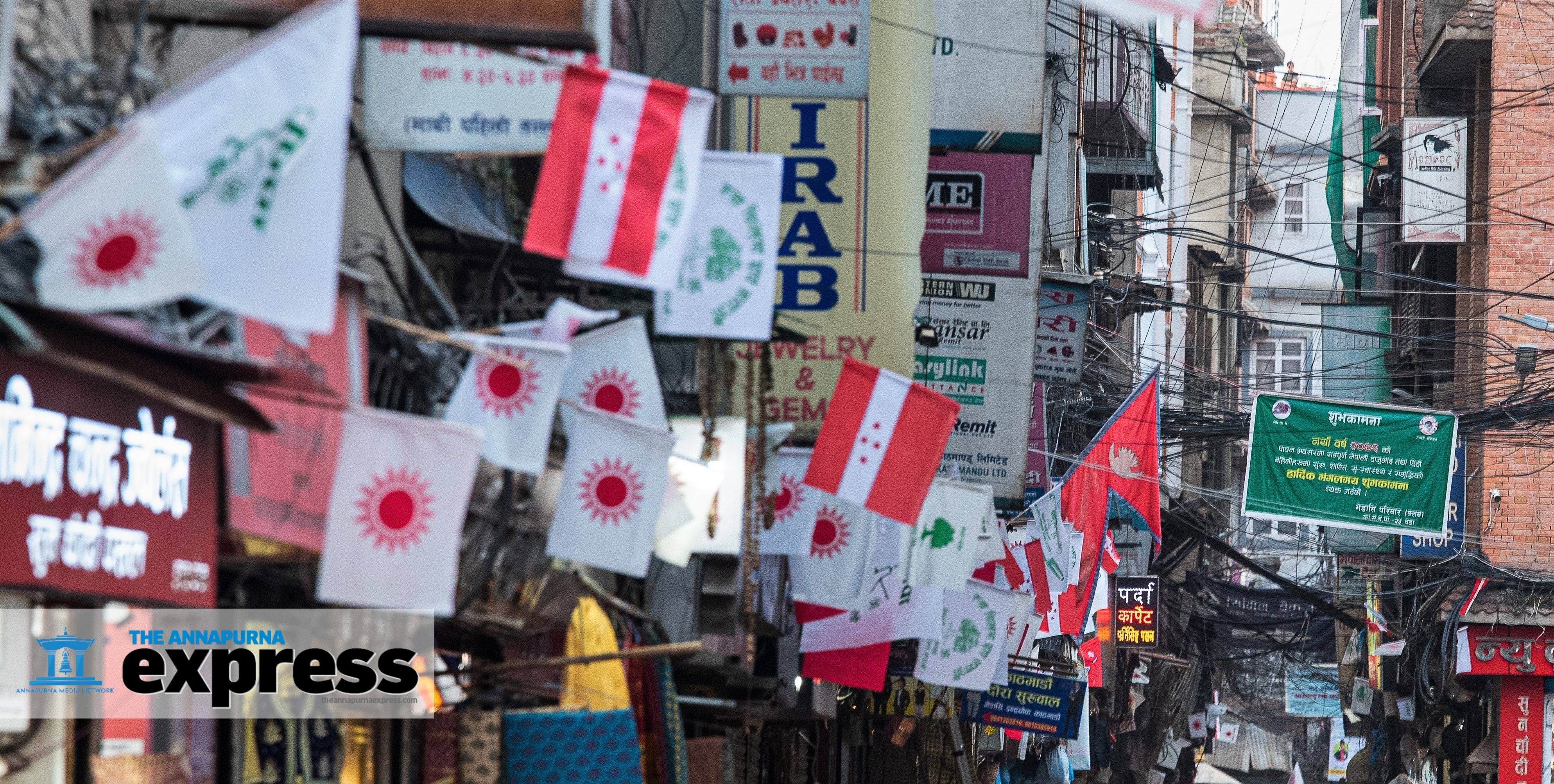
The government has declared May 13 a public holiday so that people can vote. Many people working and living in cities like Kathmandu have returned to their towns and villages to cast their ballots. There are 17.7m voters this time; 3.6m of them are first-timers.
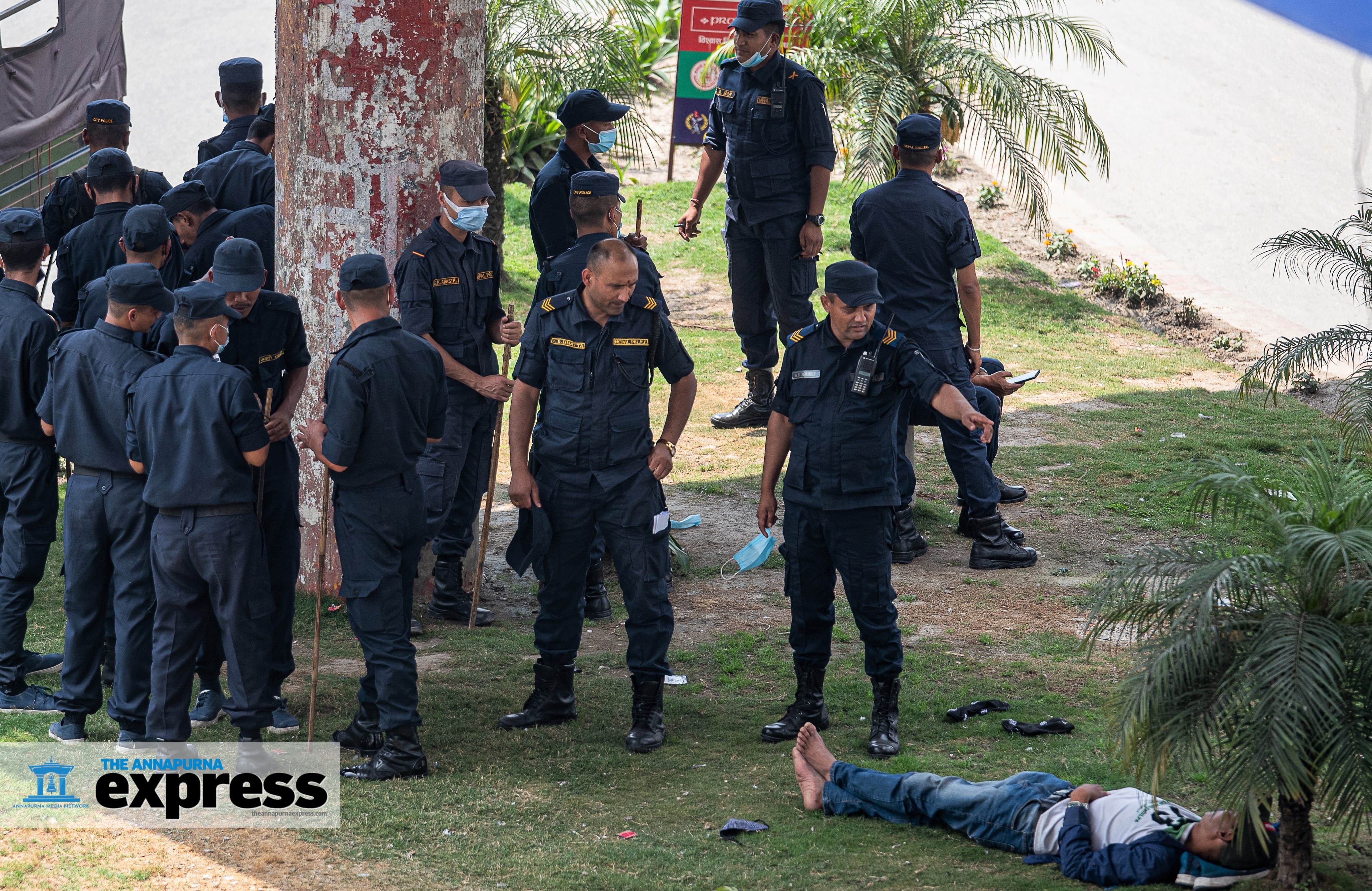
A total of 137,043 people have filed their candidacies for 35,221 posts. The campaign period has ended, and the political parties and candidates are currently observing election silence. Now they wait for the voters to decide their fate.
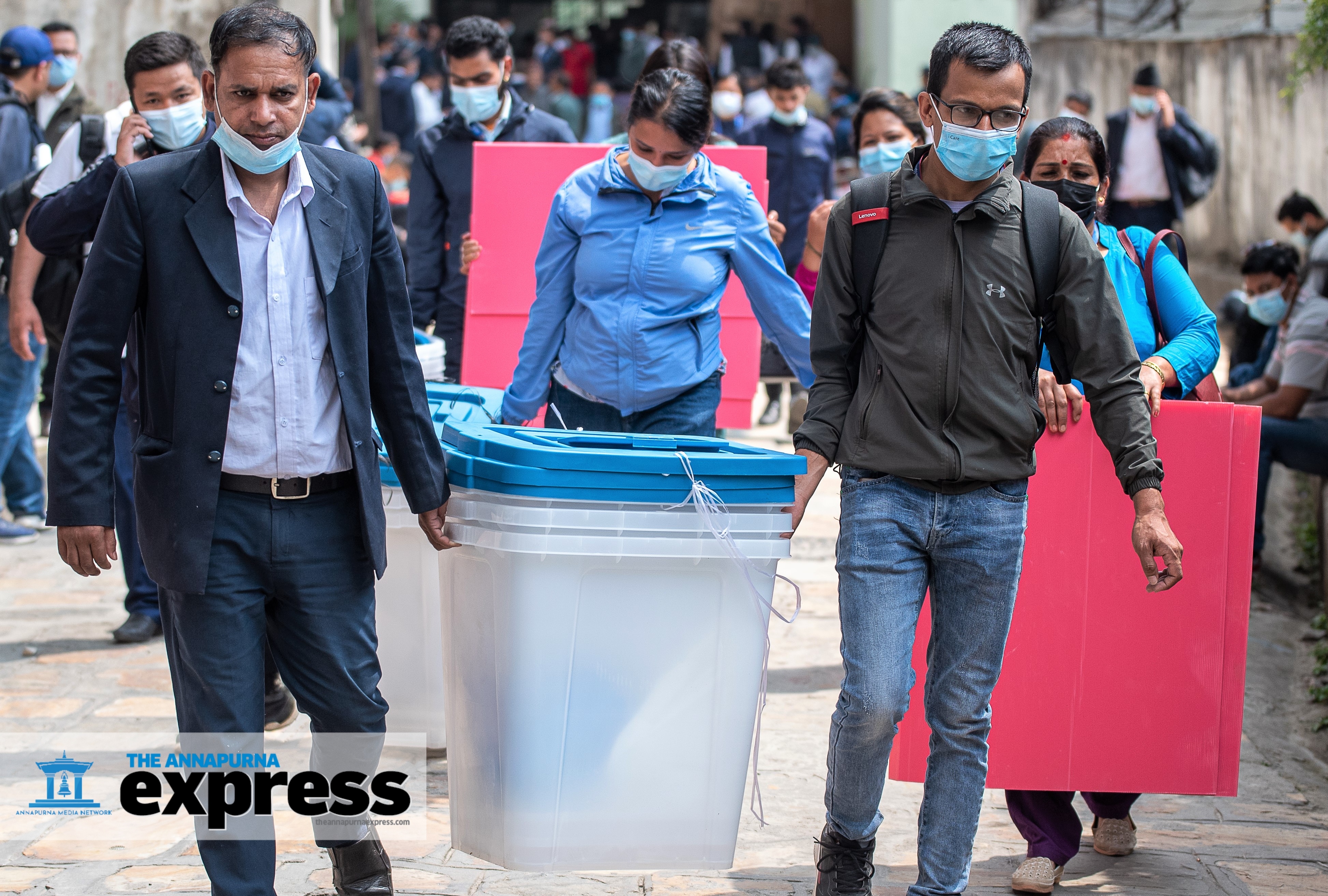

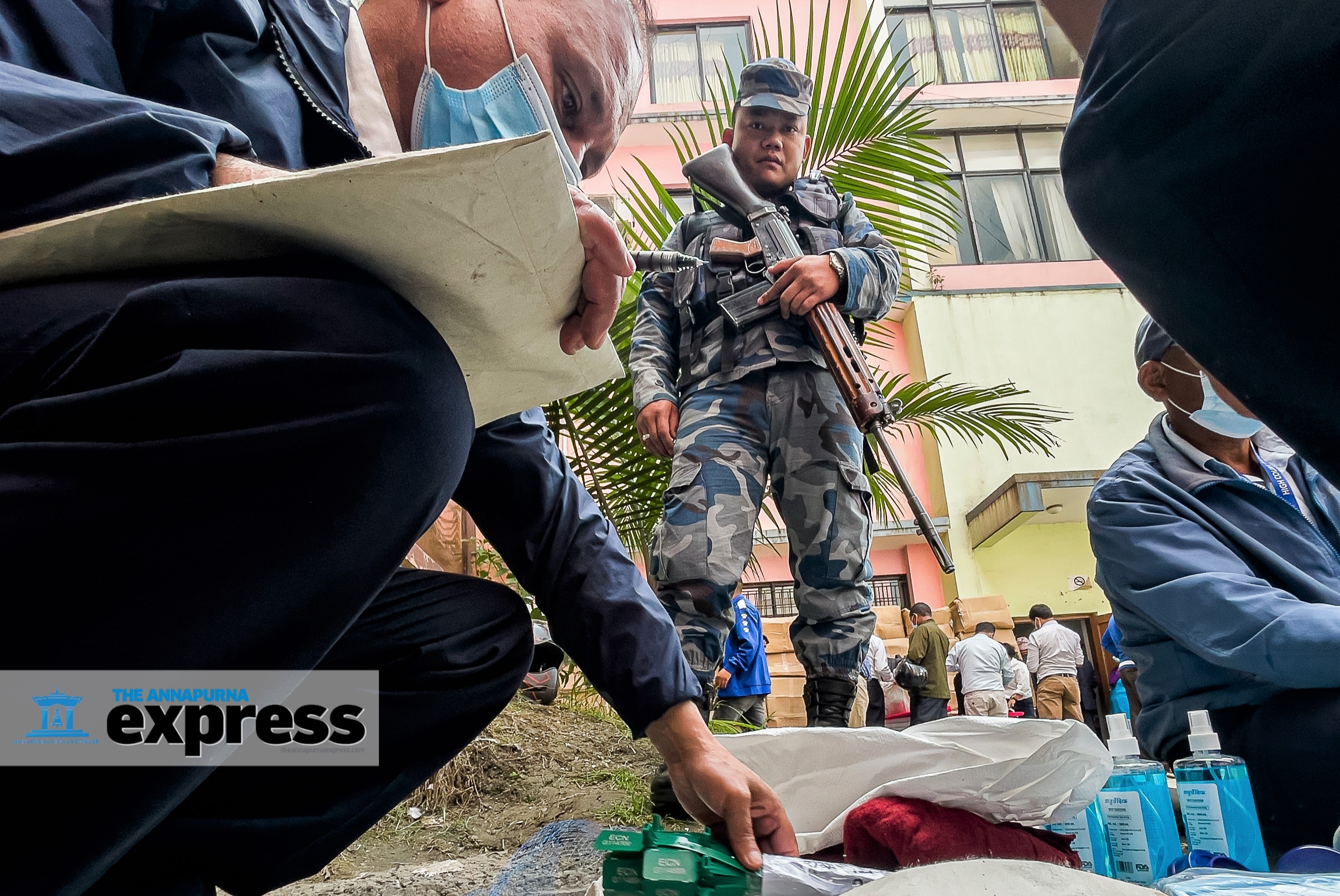
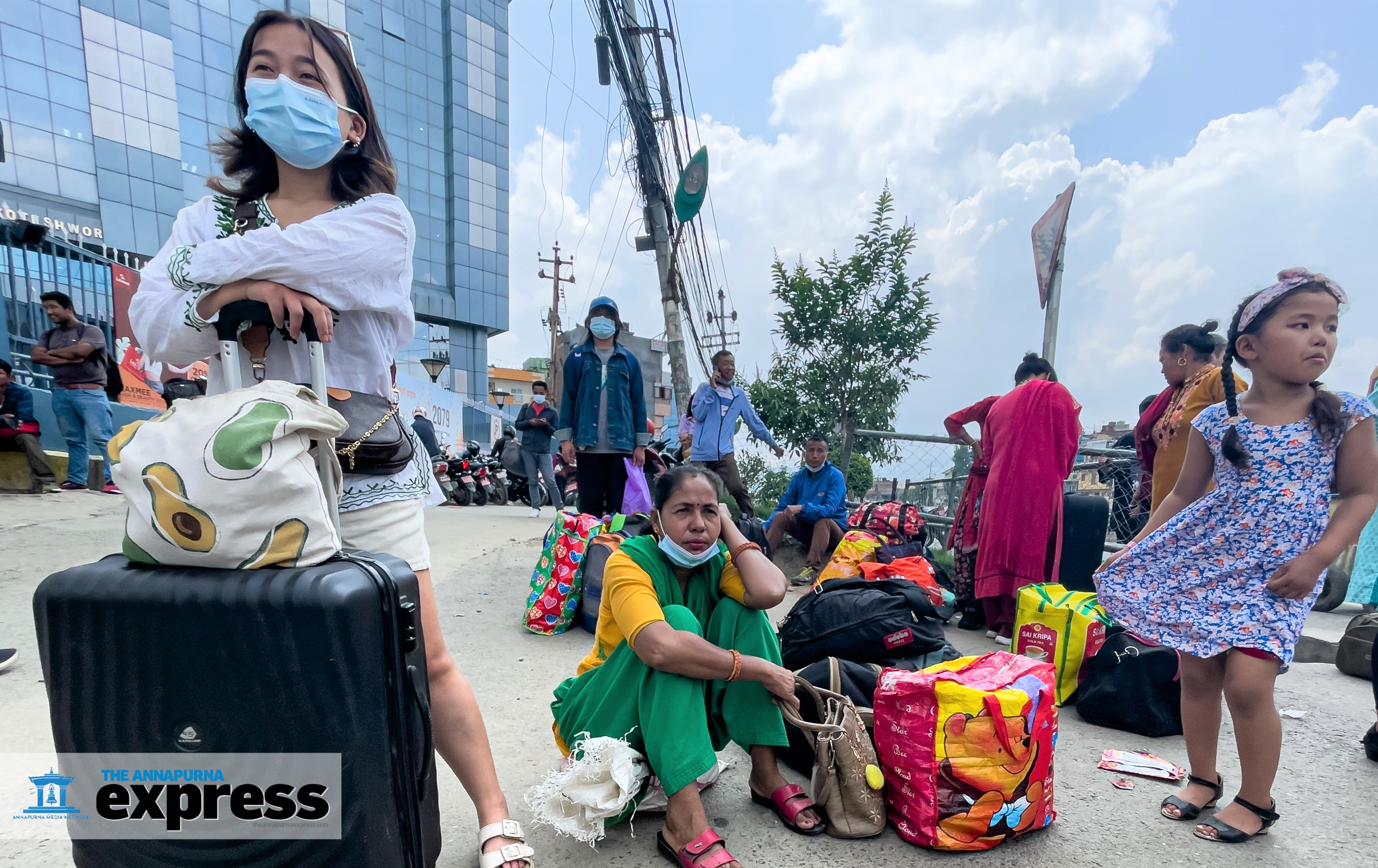
Photo Story | On the campaign trail
Srijana Singh is running for the post of mayor for Kathmandu Metropolitan City from the Nepali Congress. A former youth leader, women’s rights activist, and former chairperson of the Nepal Women Union of her party, Singh is believed to be the chief rival to CPN-UML’s Keshav Sthapit for the top job.
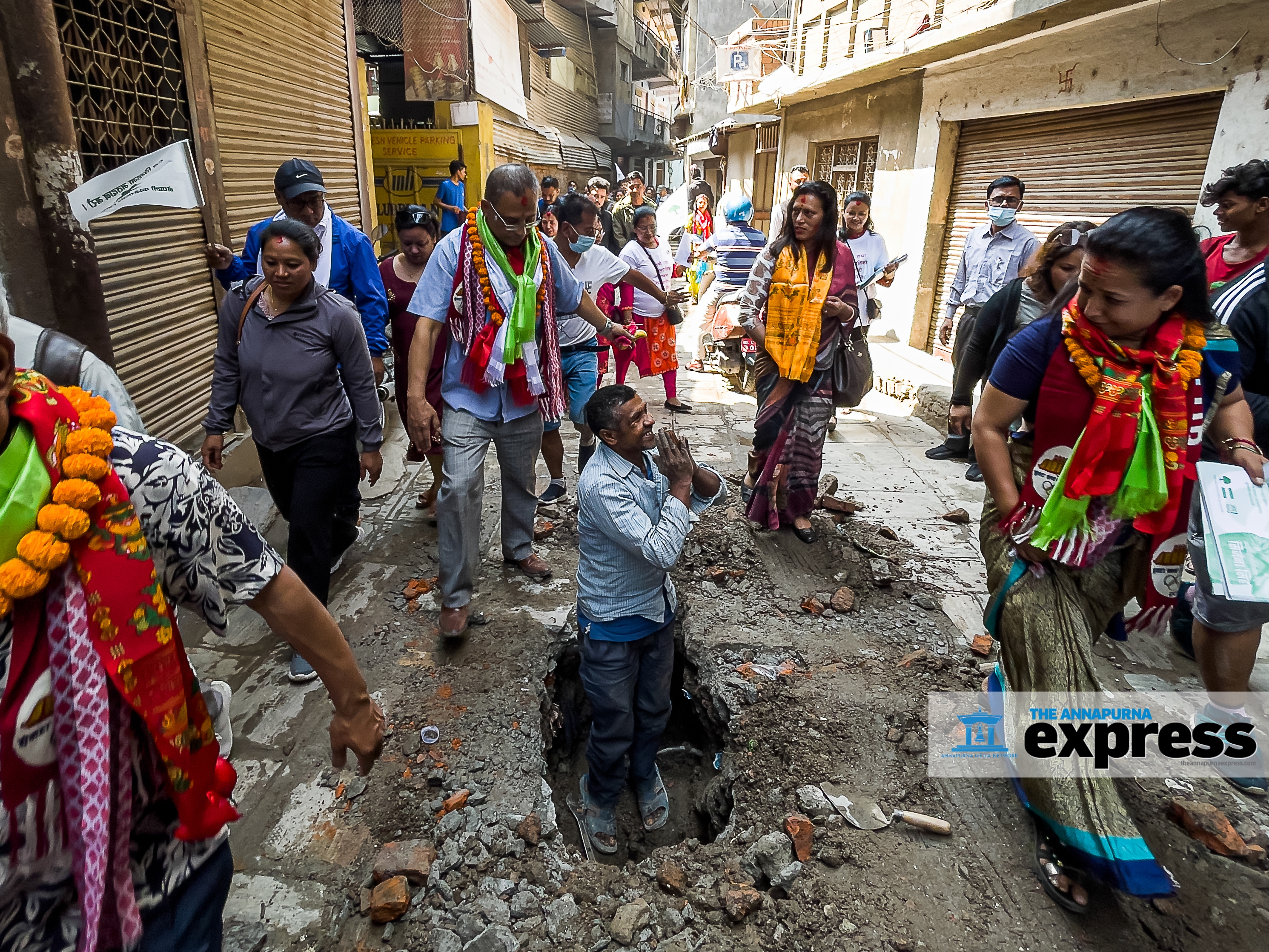
Political pundits foresee a close contest. The race is heating up, and candidates have intensified their respective campaigns in the run-up to the May 13 vote. Clad in a sari, a tika on her forehead, and garlands and khadas (ceremonial scarves) around her neck, she has been out campaigning day in, day out. Accompanying her is the deputy mayor candidate, Rameshwor Shrestha, and Congress cadres waving banners and party flags.

They walk through the narrow alleys and courtyards of traditionally Newari neighborhoods, thriving business hubs and busy streets of Kathmandu, stopping at doorsteps and shop-fronts to interact with people. Singh is polite and soft-spoken, a character that some critics have also portrayed as her weakness.
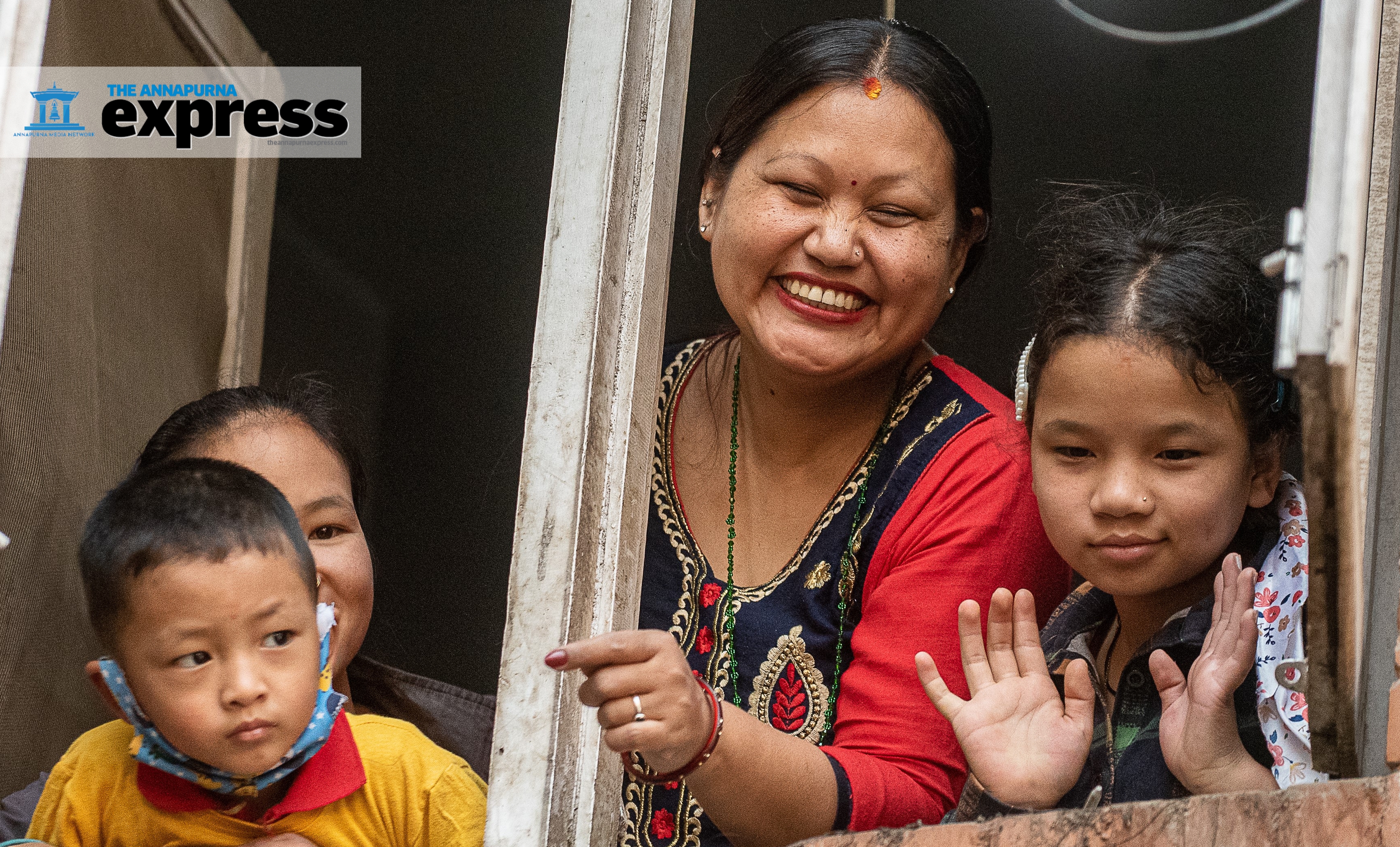
She has the opportunity of creating history by becoming the first female mayor of the capital city. She is the daughter-in-law of late Congress leader Ganesh Man Singh and the wife of Prakash Man Singh, a Congress bigwig. The campaign organization committee is hoping that Singh coming from such a historical political family will be more of a boon than a burden. It also espies the possibility of most women voting in her favor in light of Sthapit’s implication in sexual harassment cases.
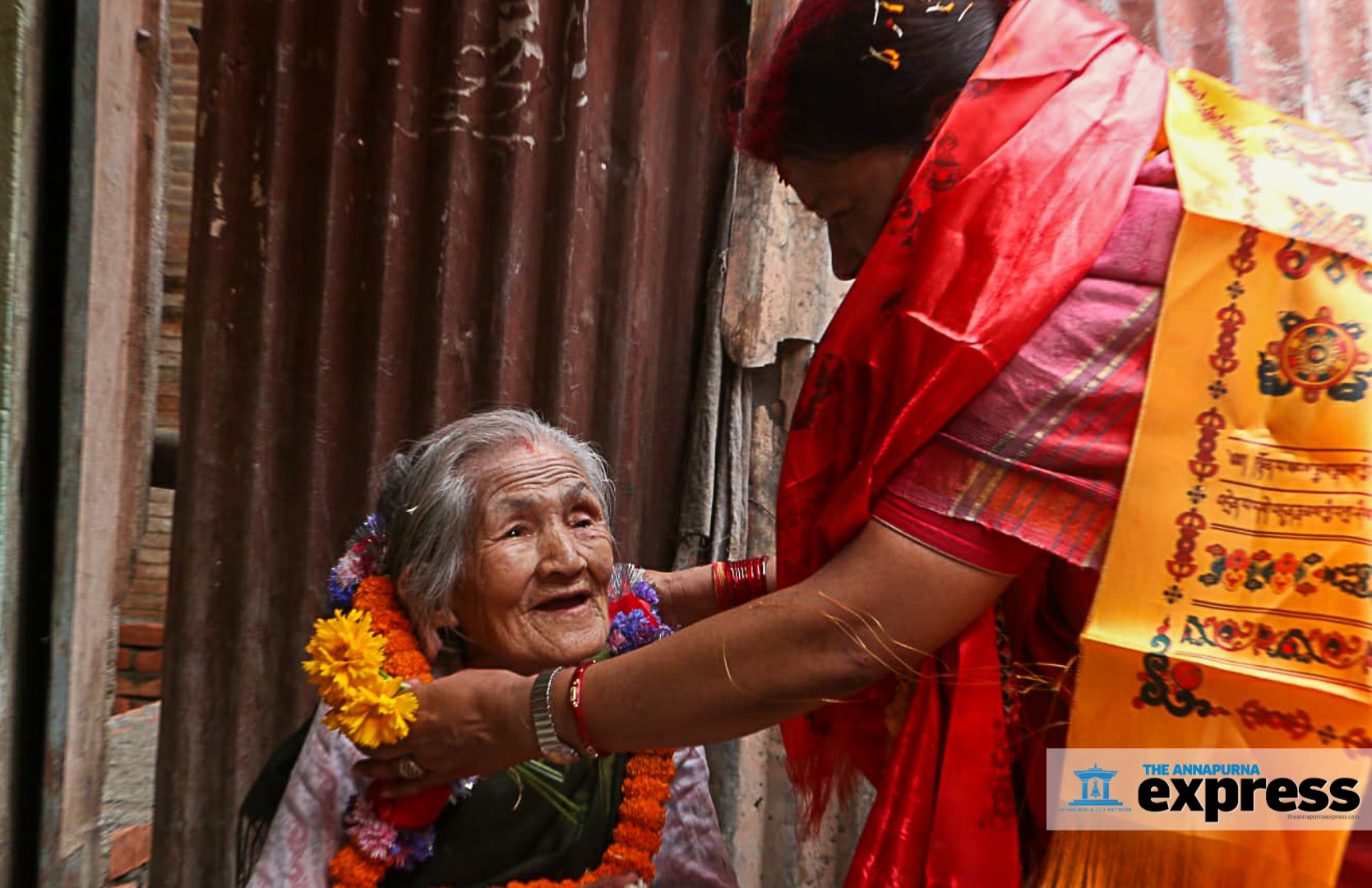
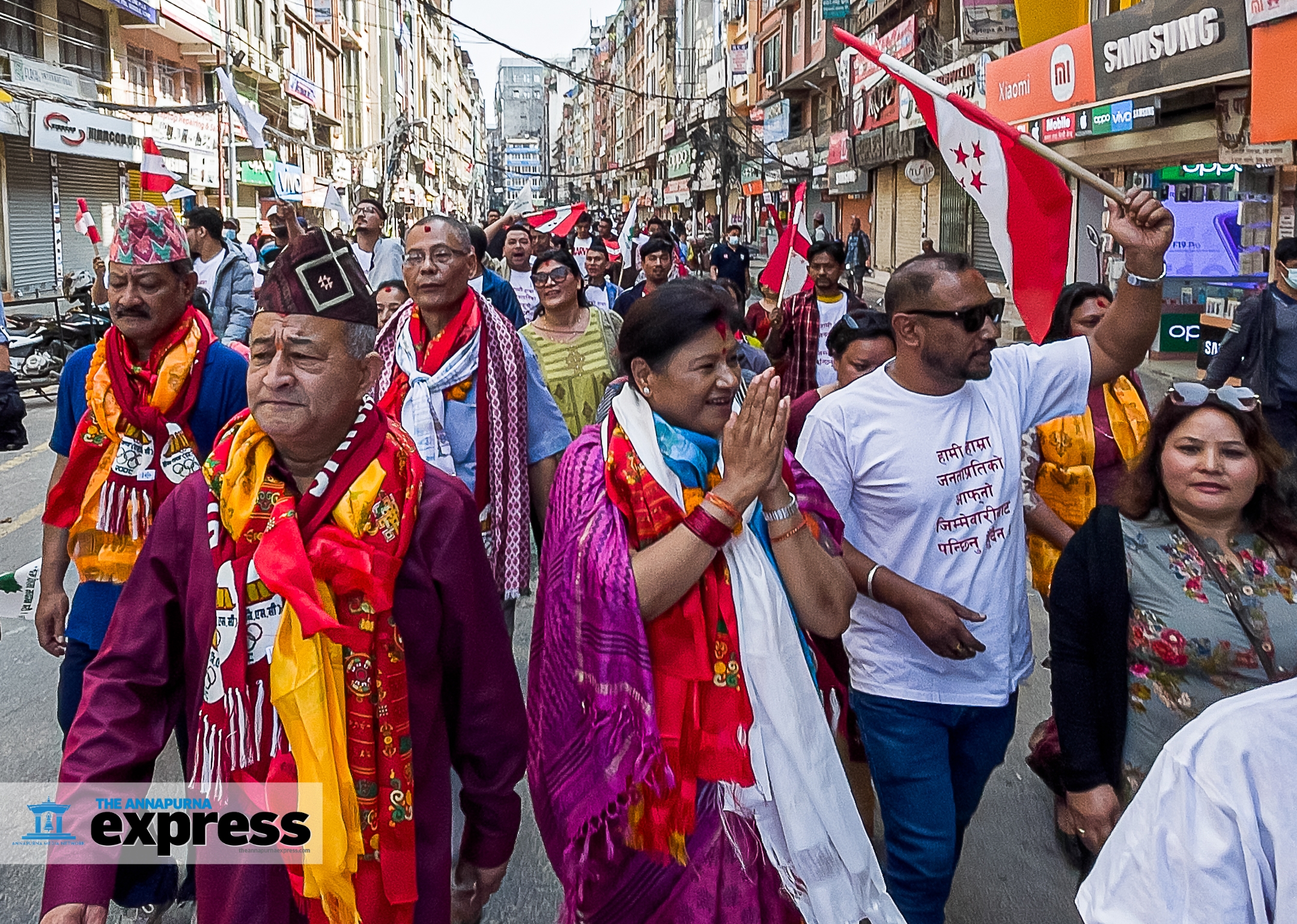
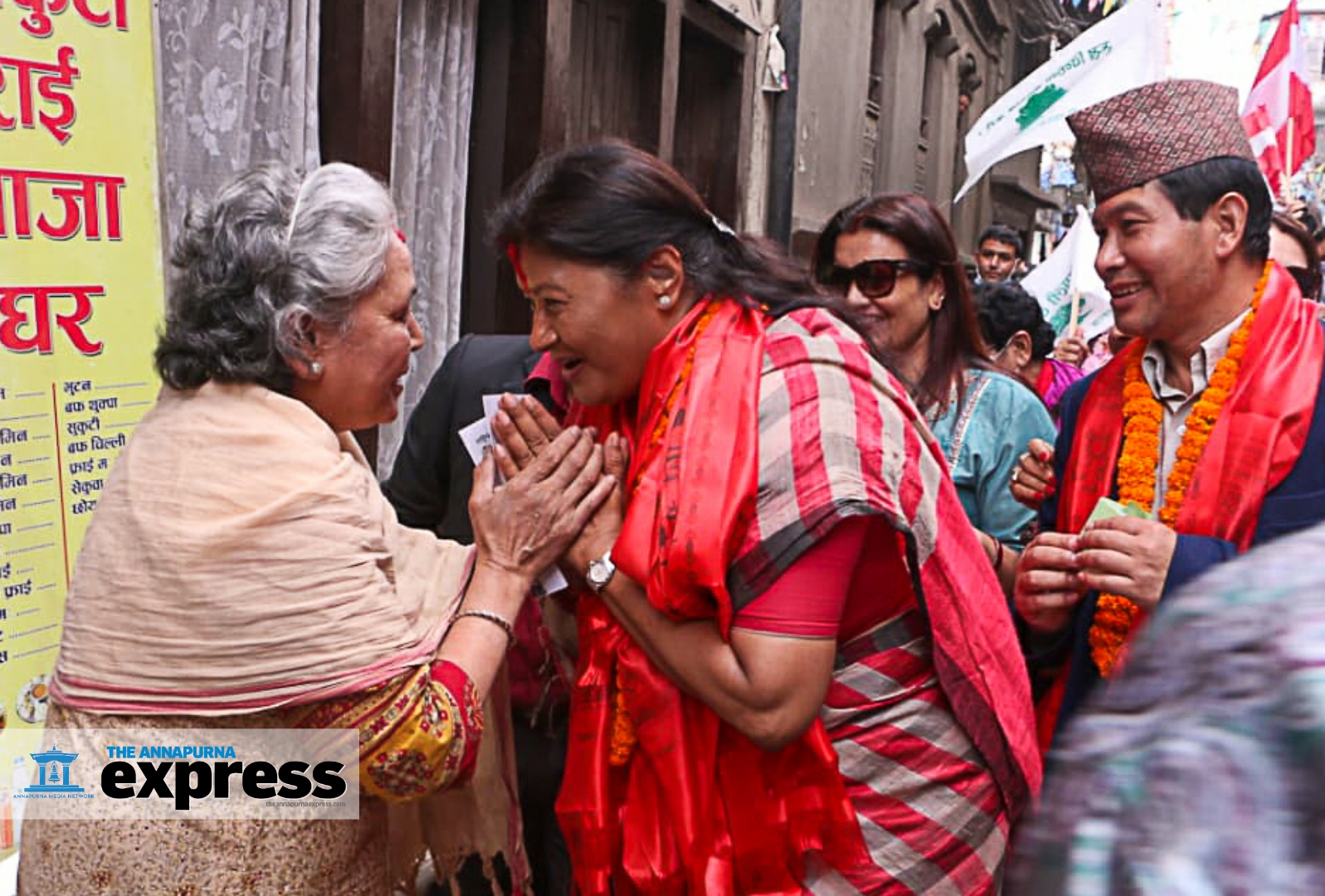
Photo Story | A Maoist-abductee’s quest for enlightenment
Shri Pancha Satya Sanathan assumes Padmasana (lotus pose) with eyes shut for his morning meditation. The loincloth around his waste is the only piece of garment hiding his modesty. A Janai (sacred thread) hangs from his shoulder and runs across his naked torso, two large silver rings gleam on his earlobes, his long jet-black hair tied in a bun. He is eerily still while I photograph him. The quiet in the room is punctuated by the shutter noise of my camera and the crackling of the sticks burning above a heap of ash on the hearth between us.
Such is the daily morning routine of this sadhu (holyman) who has been living in a small bamboo-and-mud hut inside the Pashupati temple area for the past six years.
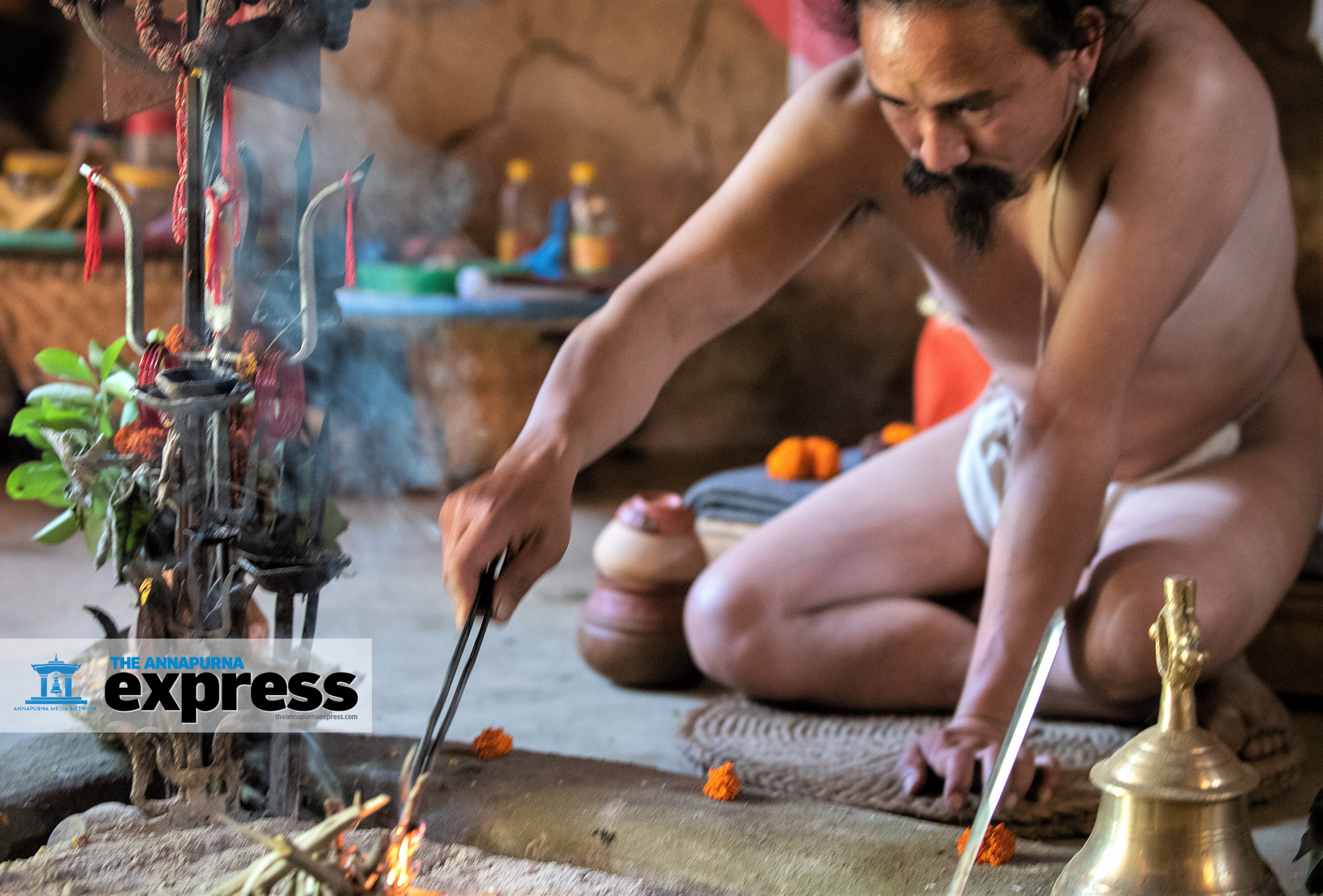
Shri Pancha Satya Sanathan was born to Dhana Bahadur Simha and Jasmati Simha in Jajarkot district of Karnali province 30 years ago. When young, he claims, he was abducted by the then Maoist rebels and taken to Ladakh, India. He recalls the time when he had to eat monkey’s meat with the insurgents in order to survive in the woods. For three years, he remained with the Maoists before returning home at the end of 1998.
“I had my spiritual awakening when I was eight,” he says. He considers his way of life a legacy of his ancestors who, like him, were Maha Siddha Purus (awakened ones).
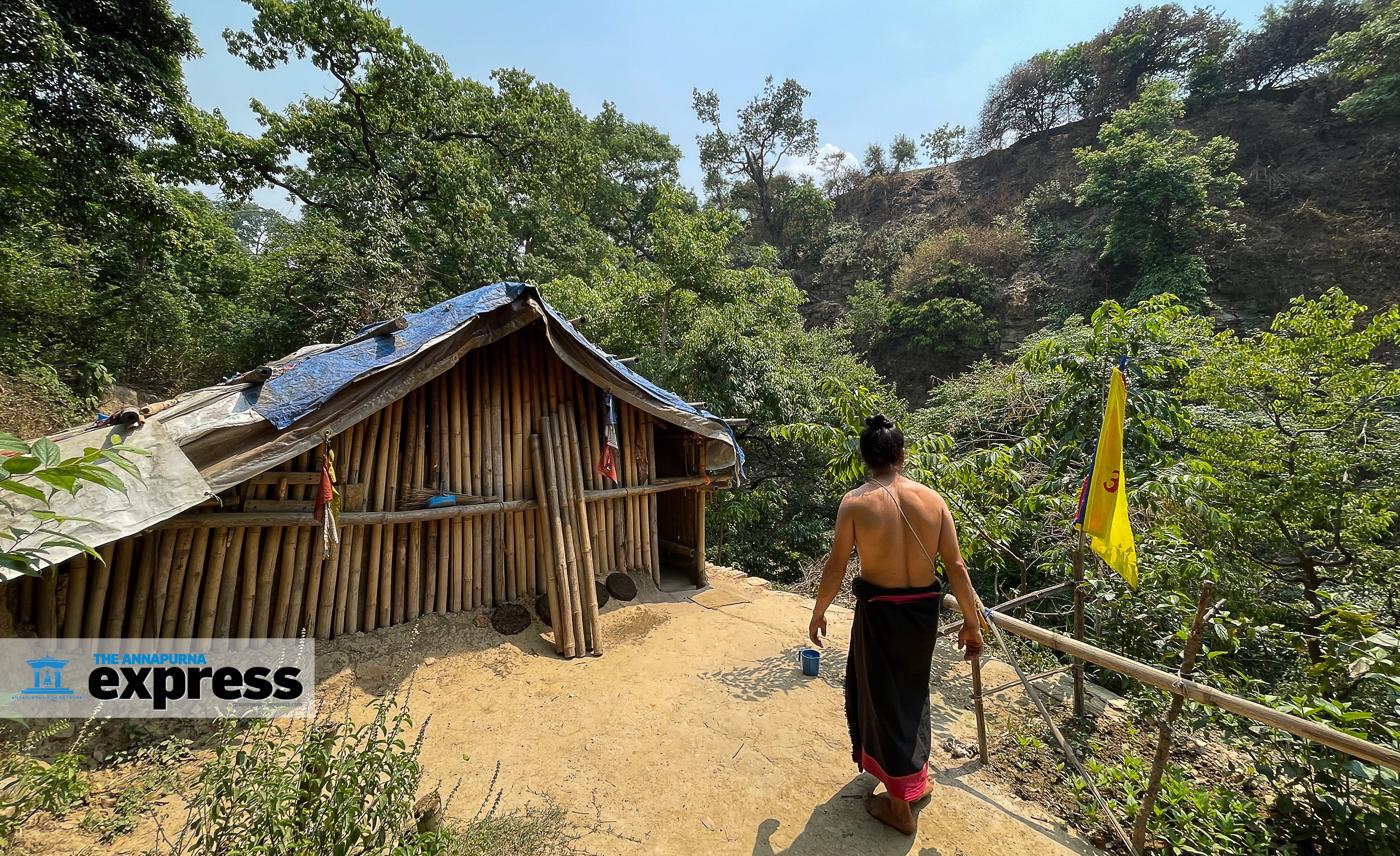
After completing his tenth grade from Durbar High School, he came in contact with Nagar Guru Shri Rama Tripali and Dr Swami Rama Krishna Prapannachrya. For years, he served as their disciple, his spiritual gurus, learning about the Sanatan Dharma. He relinquished his family and all worldly possessions and adopted the name Shri Pancha Satya Sanathan.
“I came to Pashupati when I was 19. Before that I lived in a cave for nearly six years. Most of the time, I meditated,” he says. These days, he spends most of his time in his hut, meditating and performing rituals. In the evening he joins fellow sadhus for dinner. He is a respected figure among his peers—all of them searchers of enlightenment.
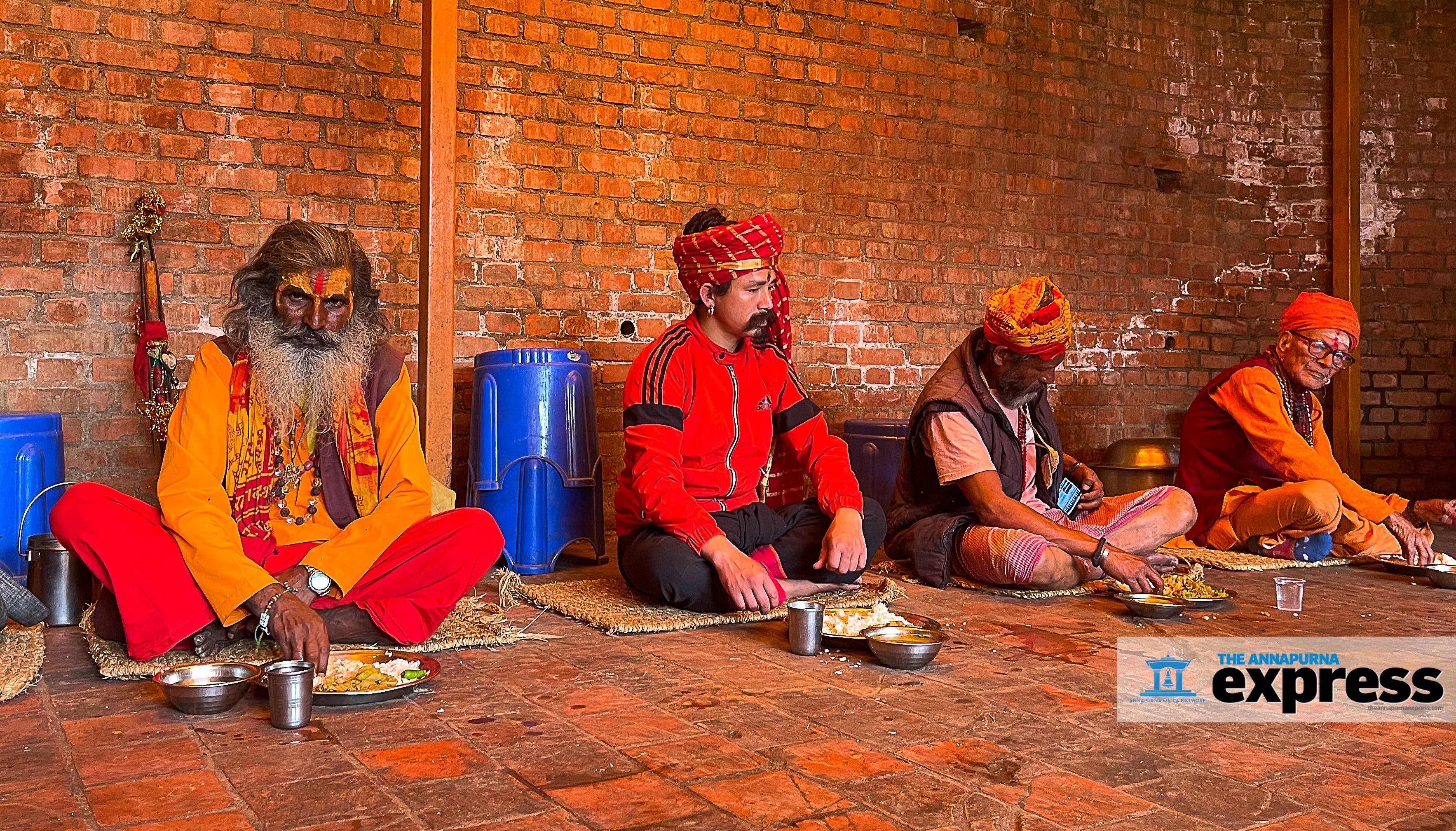
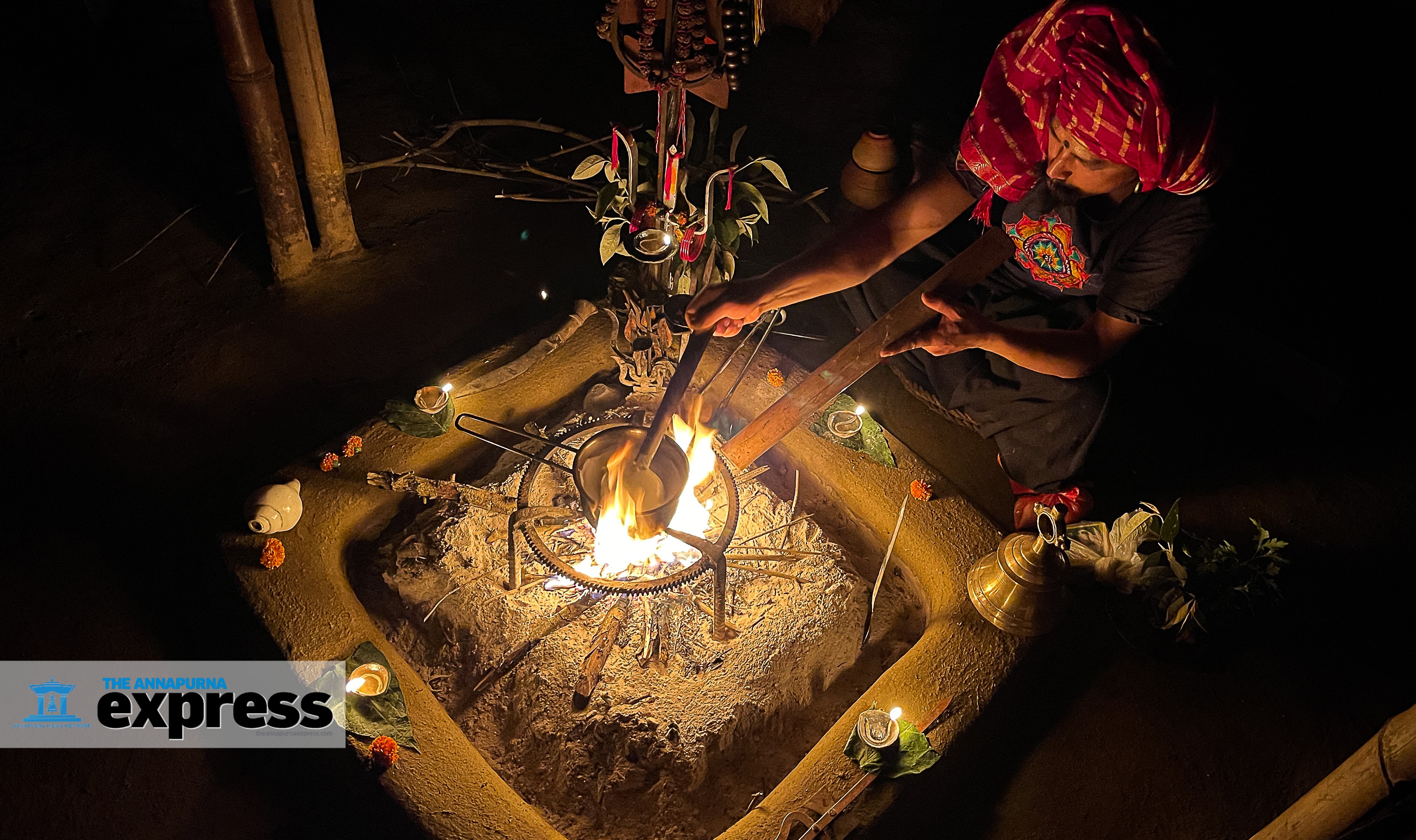
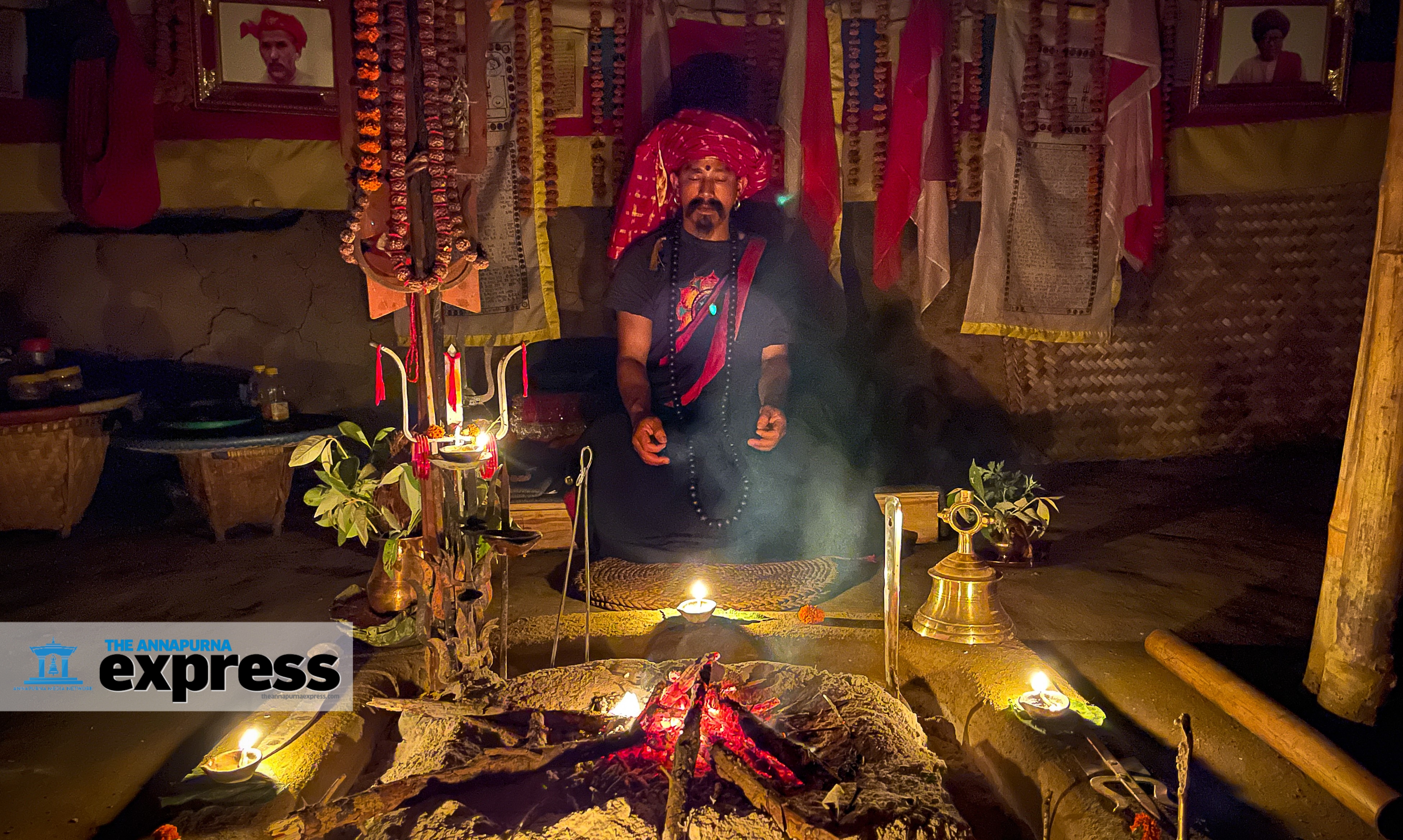
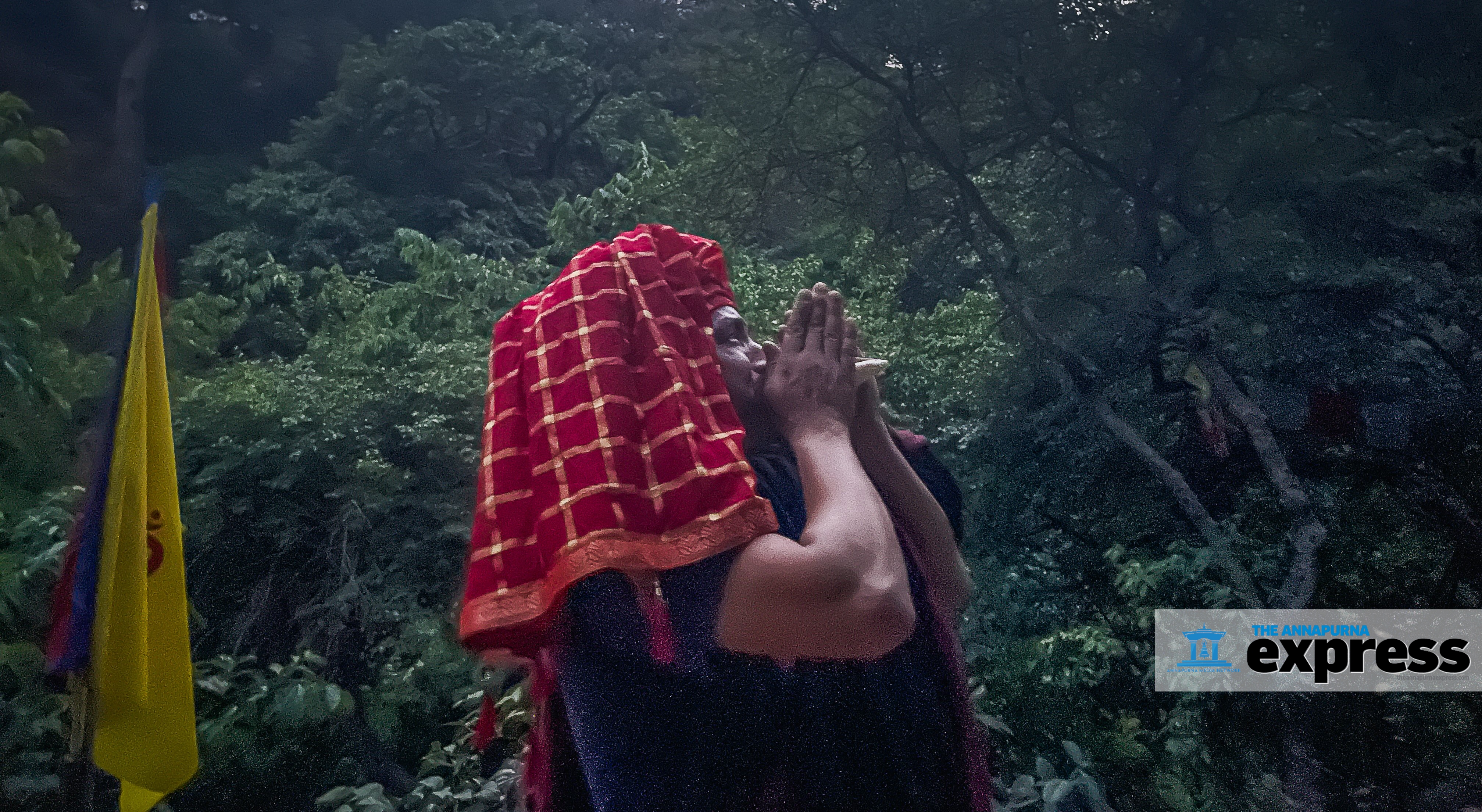
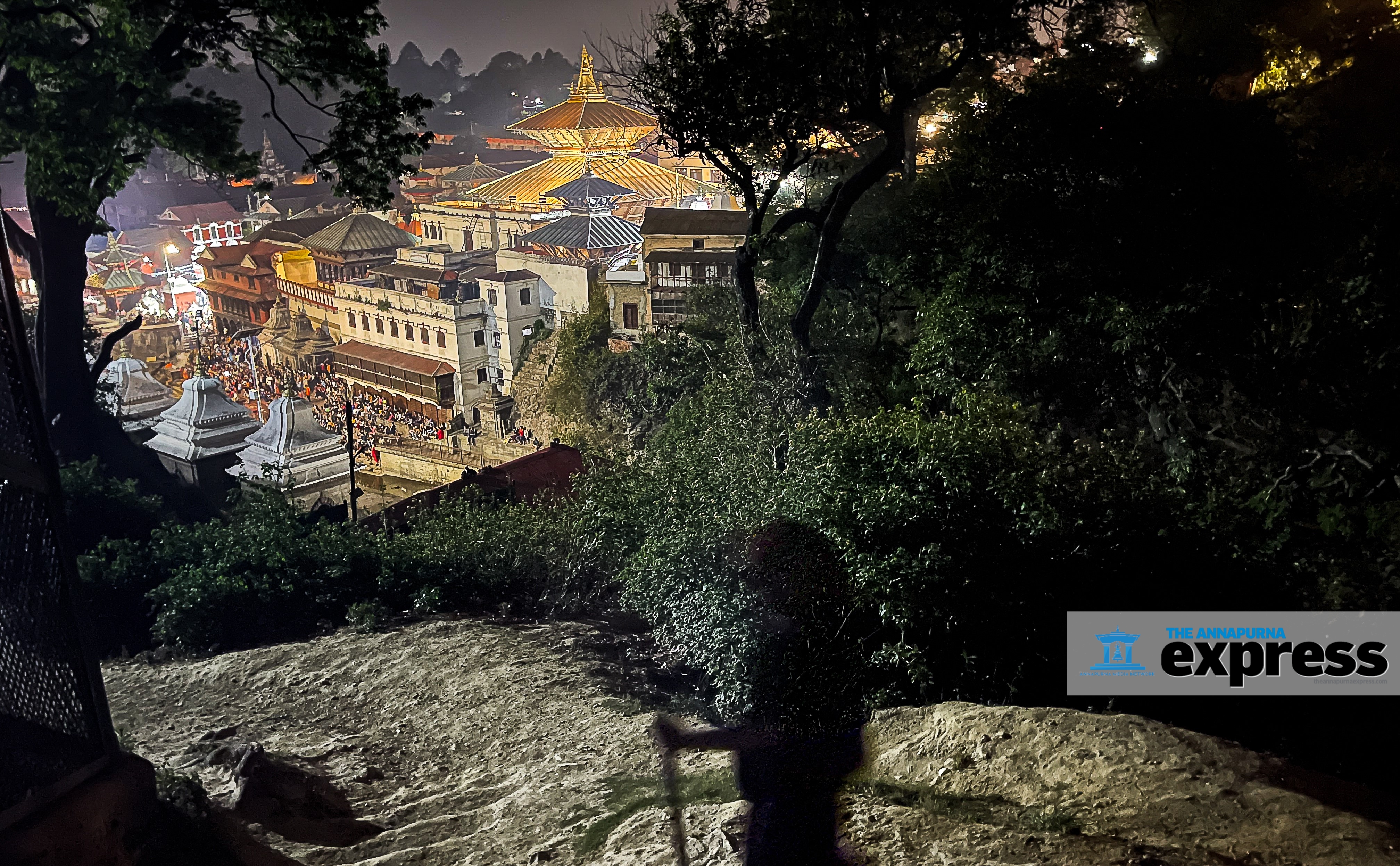
Photo Feature | Chisel, hammer and his wit
Durgesh Kushbaniya sits in the shade of a blooming Jacaranda tree by the roadside at Chabahil, Kathmandu. Beside him are stone pestles—oval, rectangular—neatly arrayed on a makeshift display stand adorned by a maroon carpet.
The 33-year-old, who hails from Rupandehi district of Lumbini Province, has been making and selling pestles and mortars here for many years. He first came to Kathmandu some two decades ago with his young wife, who is from India. The couple has three children: one daughter and two sons, all of whom go to the Pashupati Secondary School nearby.
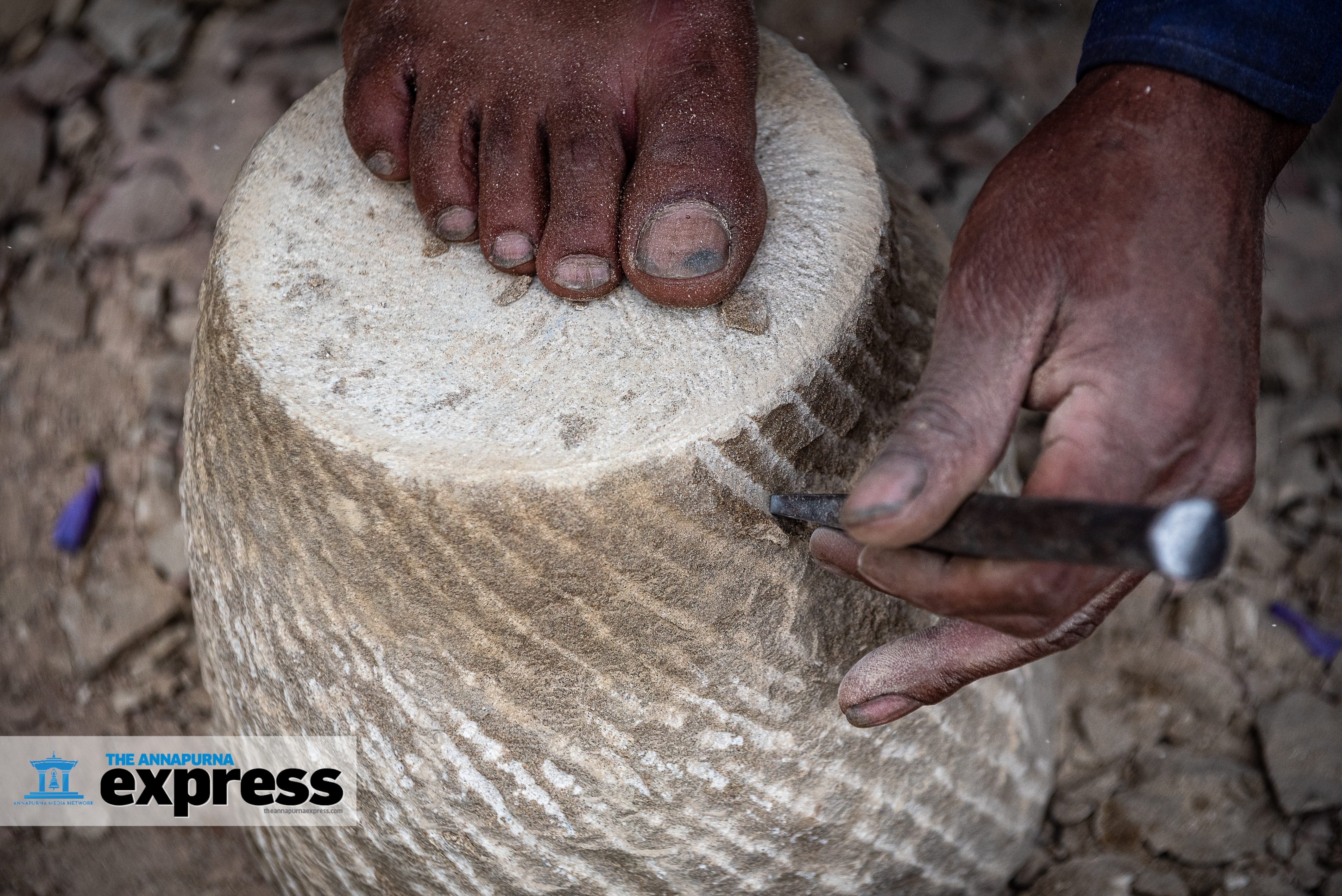
Kushbaniya says selling pestles and mortars is his only income, with which he feeds his family. He has rented a tiny room nearby. All five family members eat and sleep here.
Until a few years ago, the family used to live under a makeshift tent. Kushbaniya says he rented the new place after the municipal police of Kathmandu Metropolitan City removed the tent.
The room the Kushbaniyas live in barely fits two beds. But for the family, it is home—the only place they can afford.
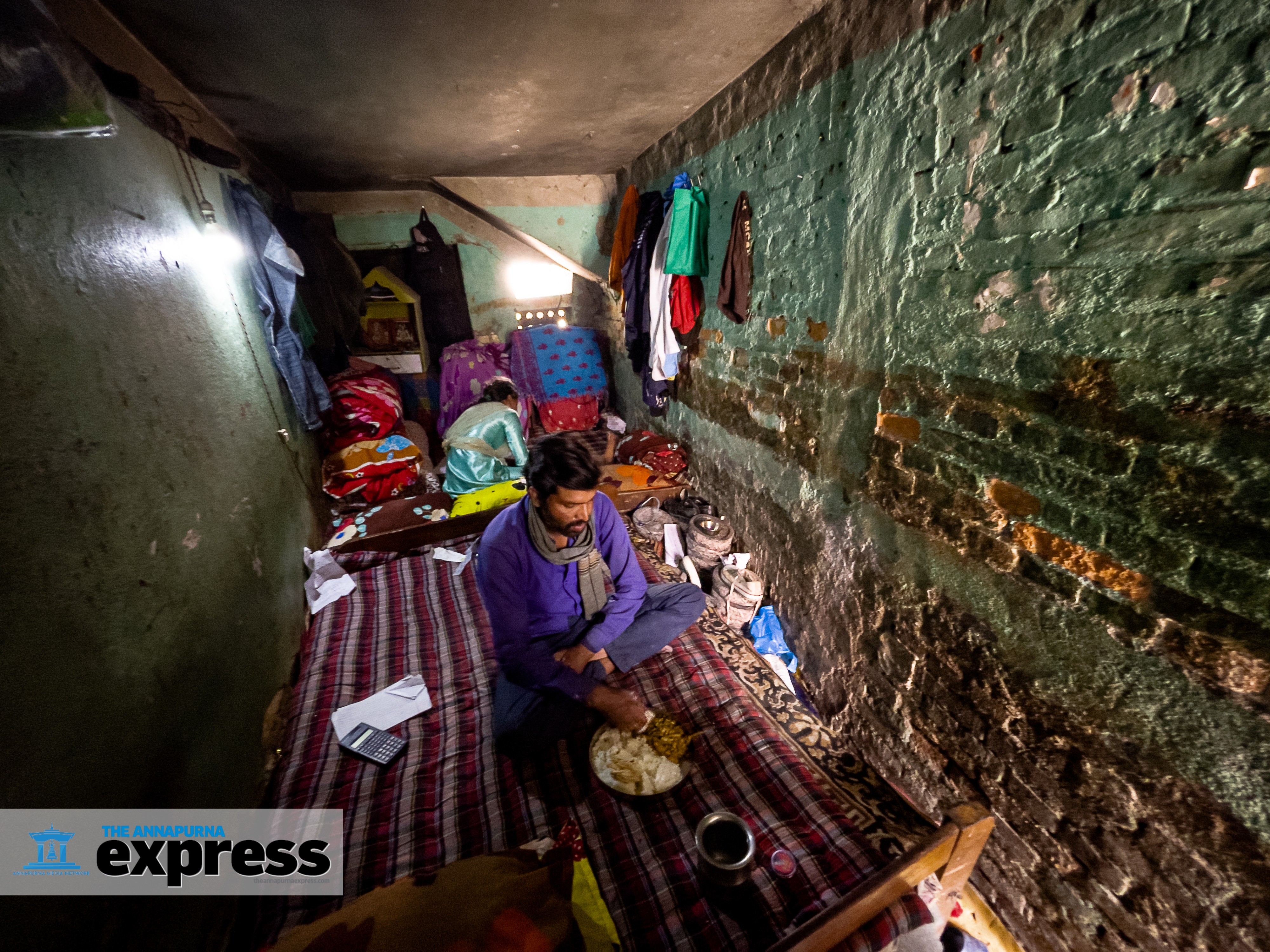
“My line of work doesn’t provide a steady source of income,” he tells me. “Sometimes I make Rs 10,000 in a day and other times nothing at all.” Still, he continues because he has no other skills.
Kushbaniya gets the stones for his products from Birgunj in Parsa district. “They have to be transported in trucks, and it is my job to turn them into mortars and pestles using my chisel, hammer and my wit,” he says. “It takes up to three days to create one pestle. Their price depends on the work I have to put in.”

